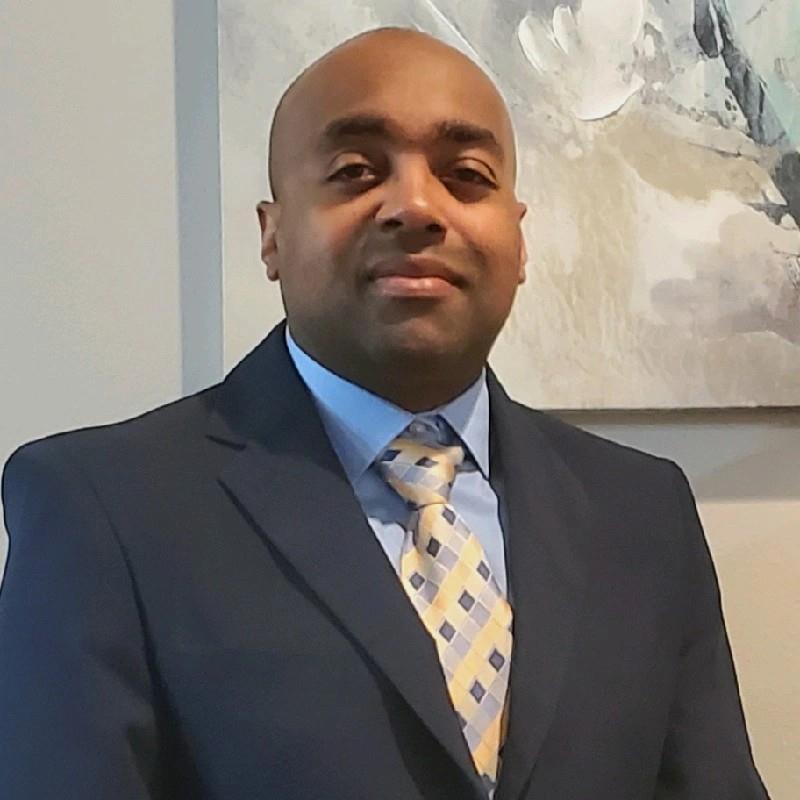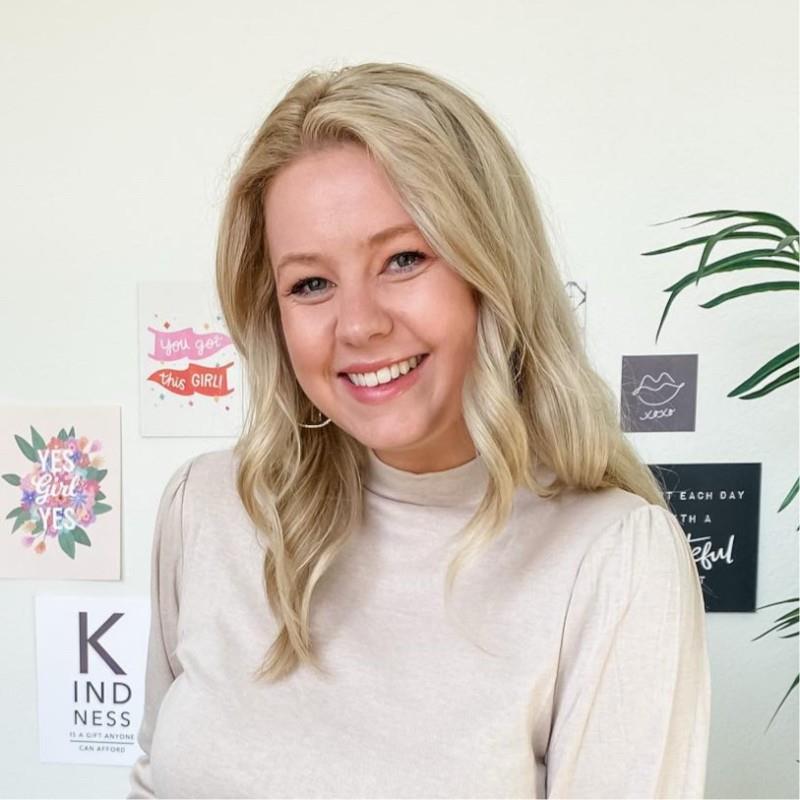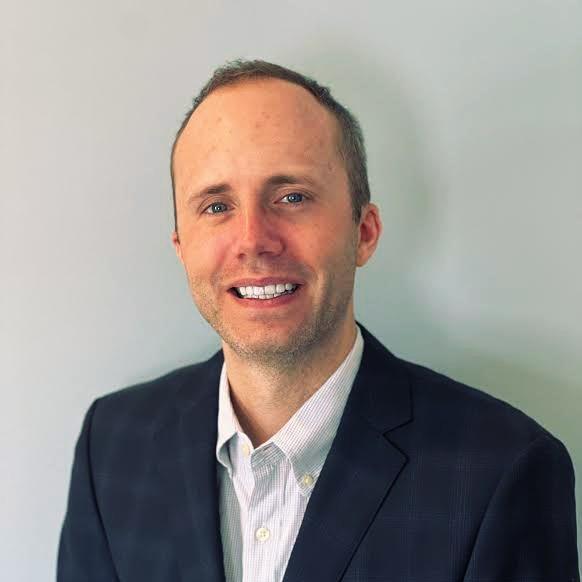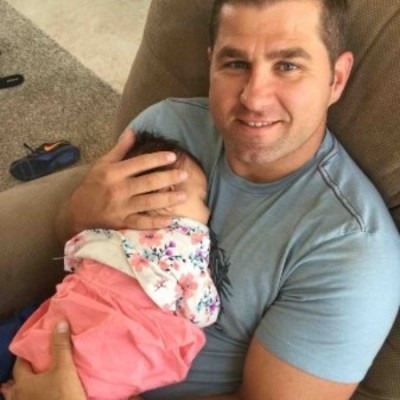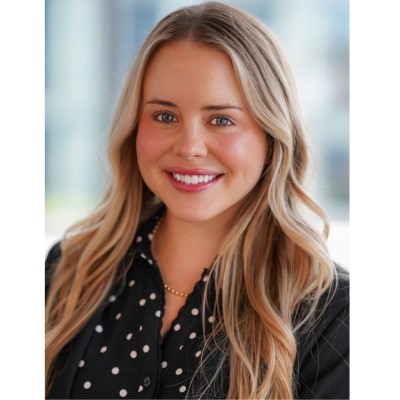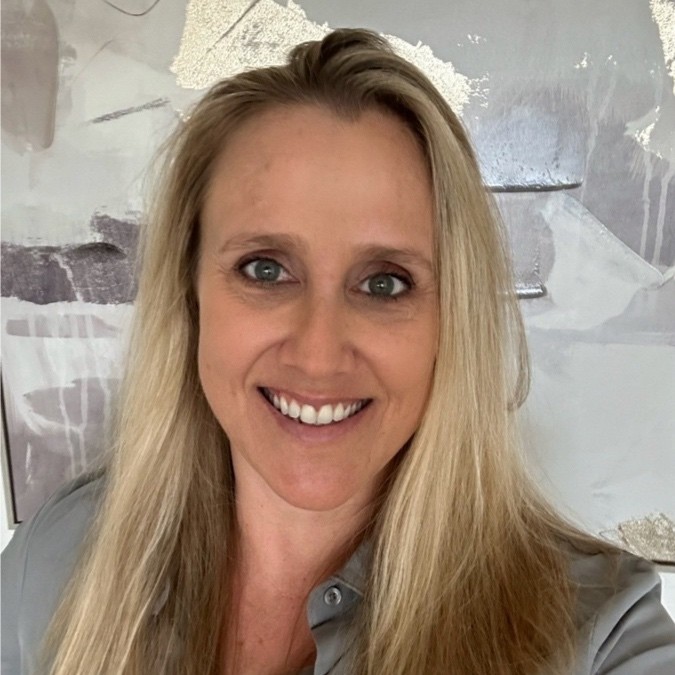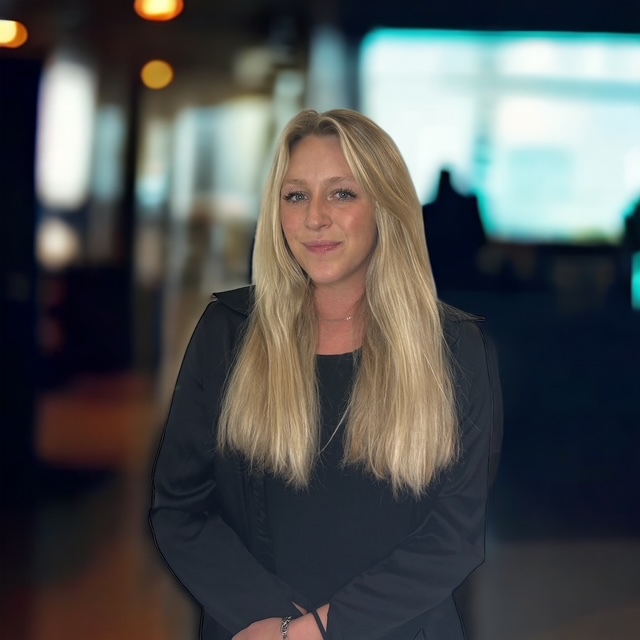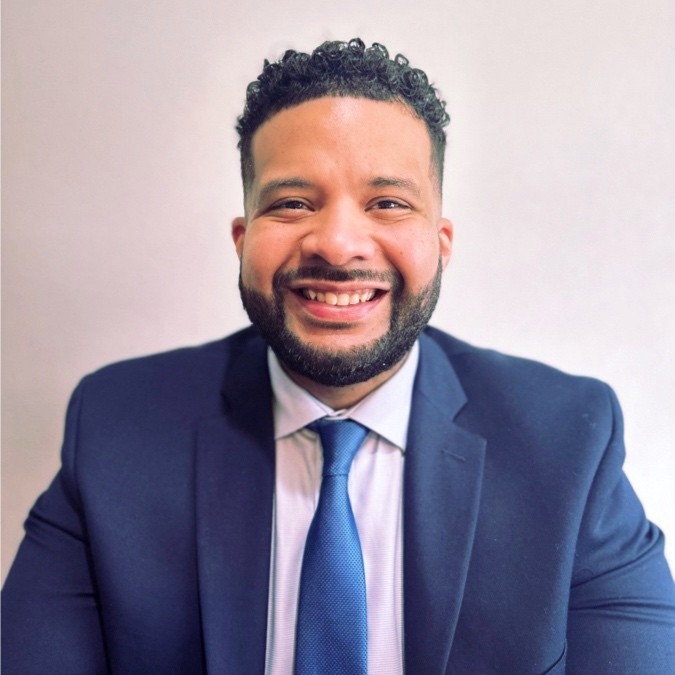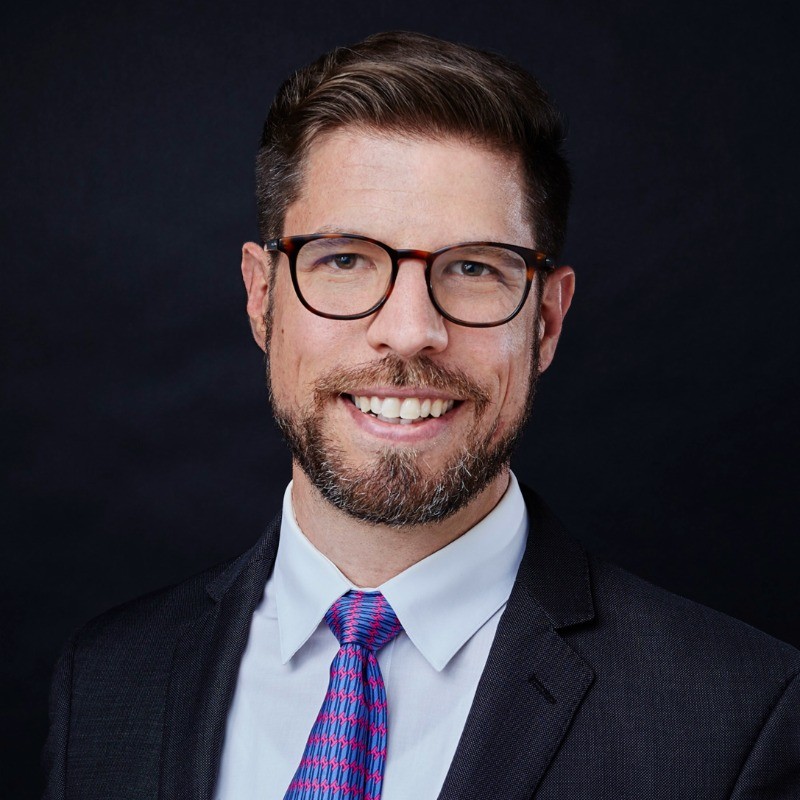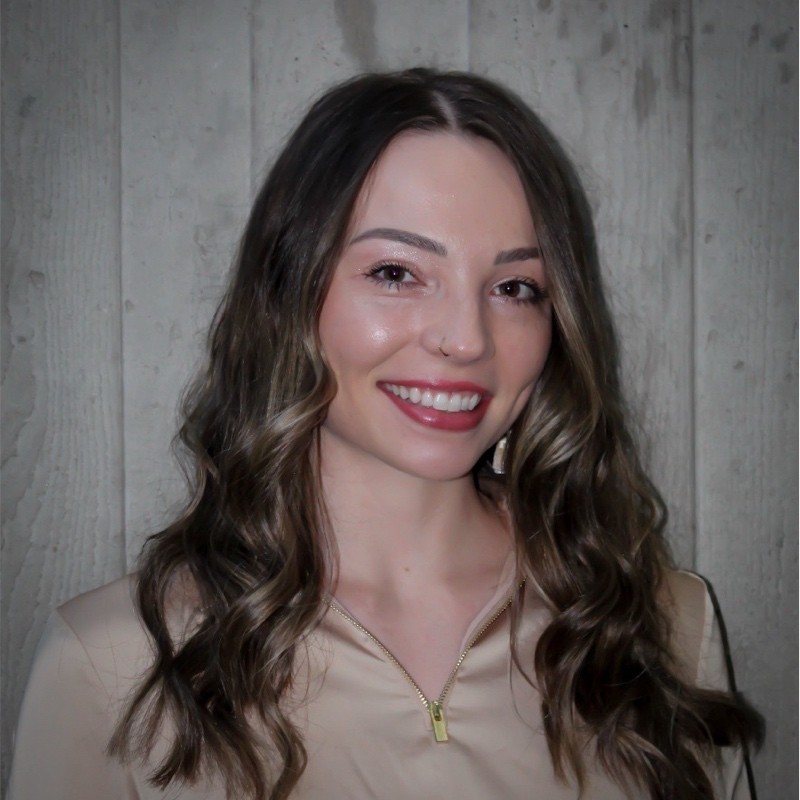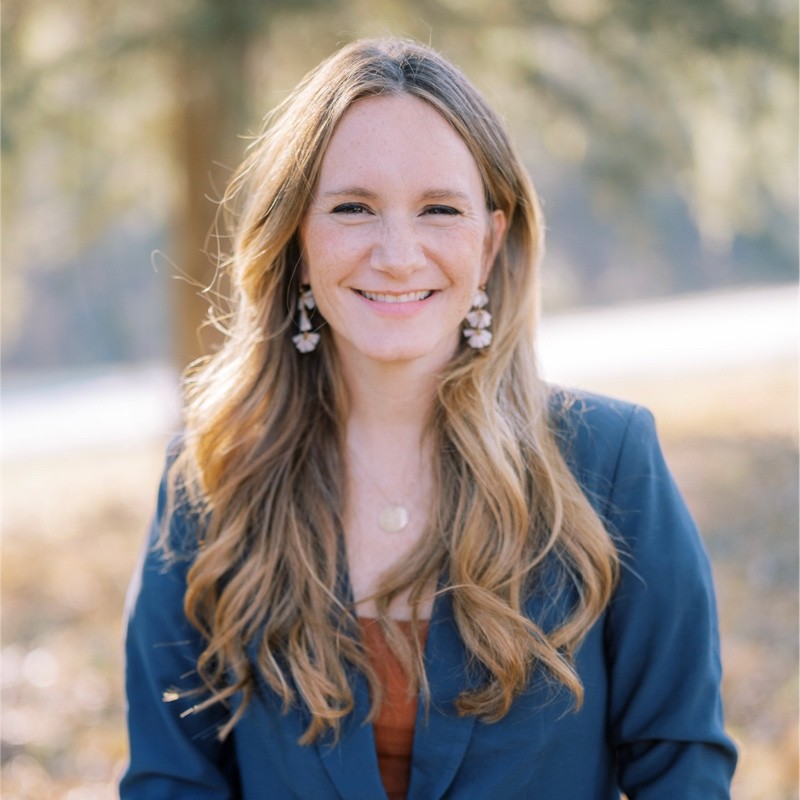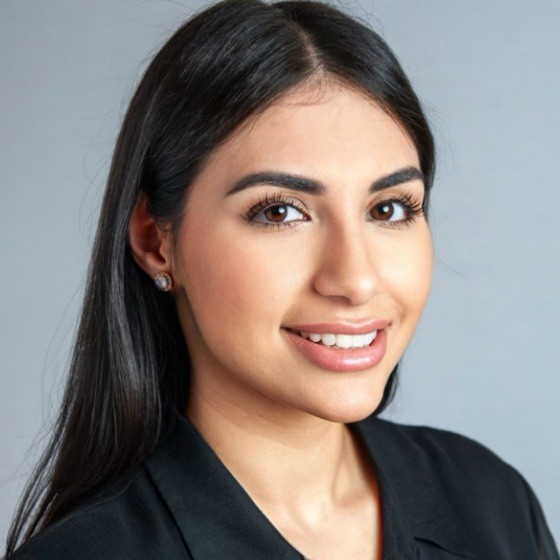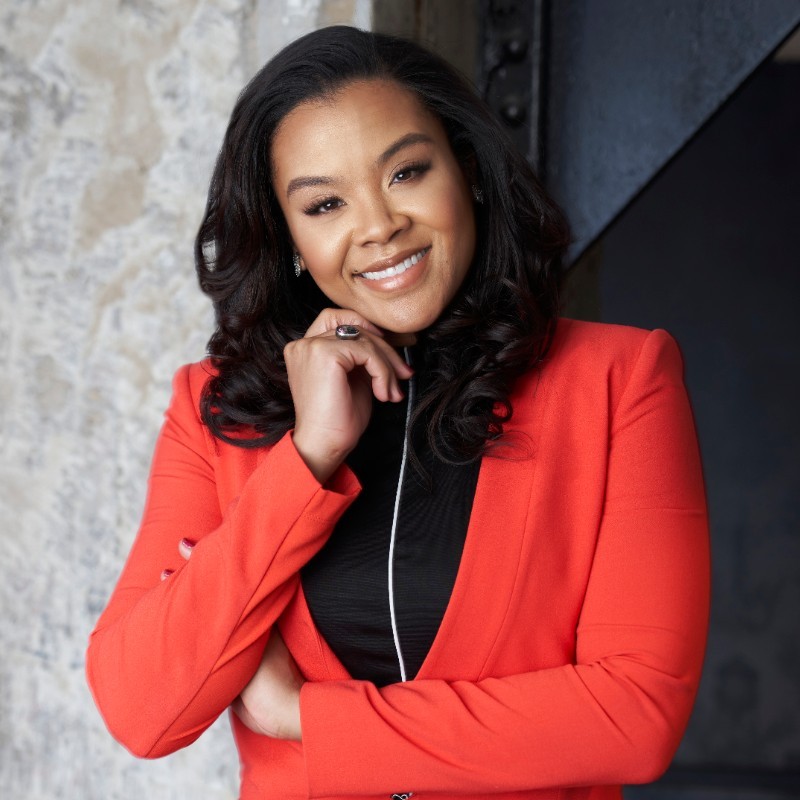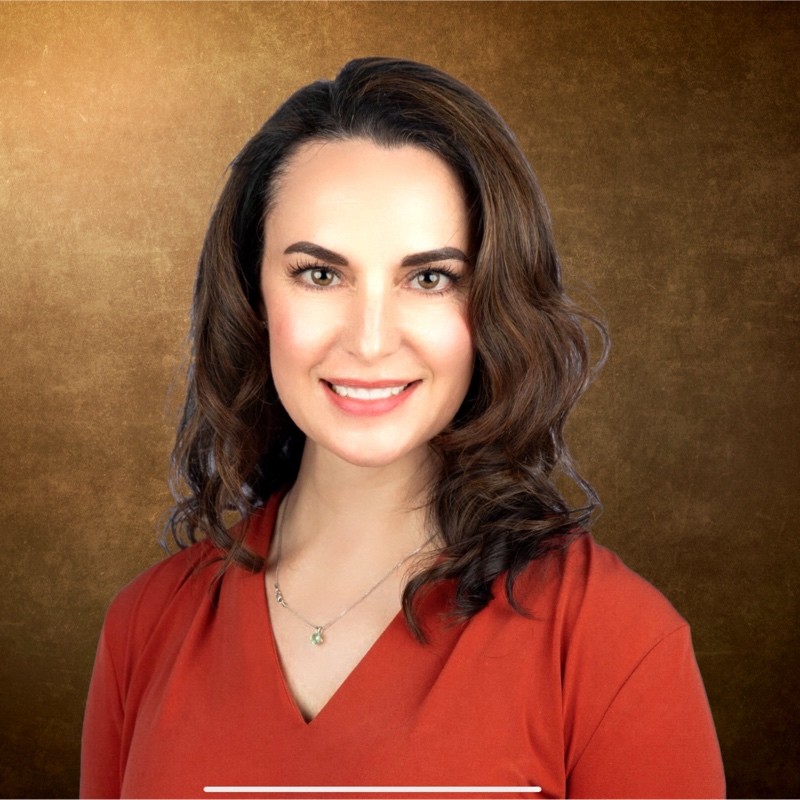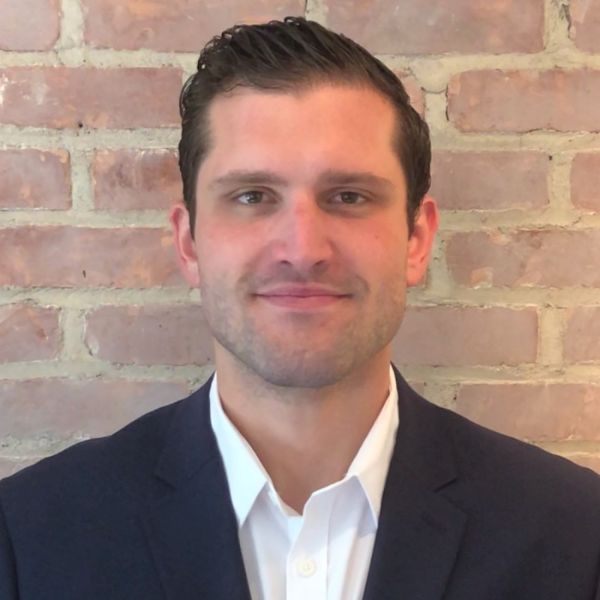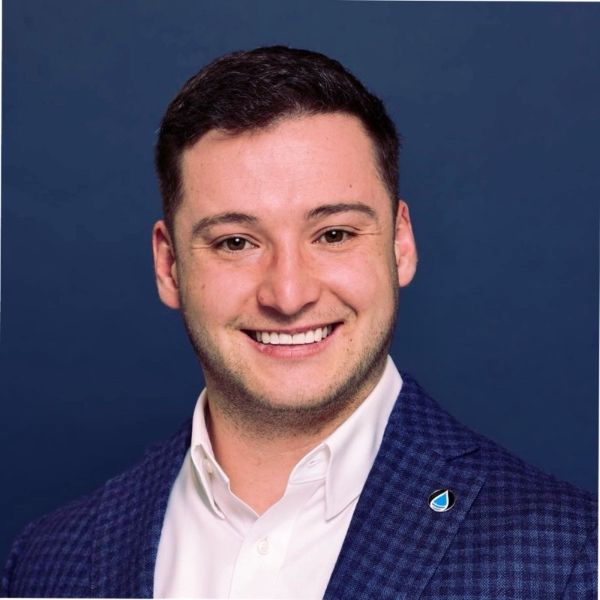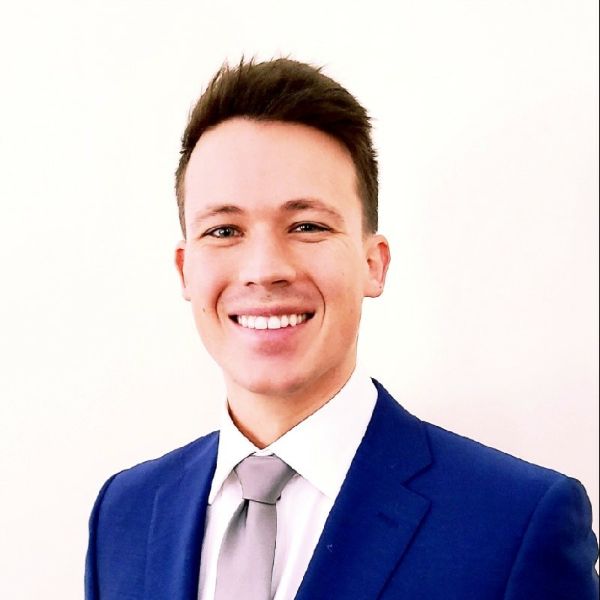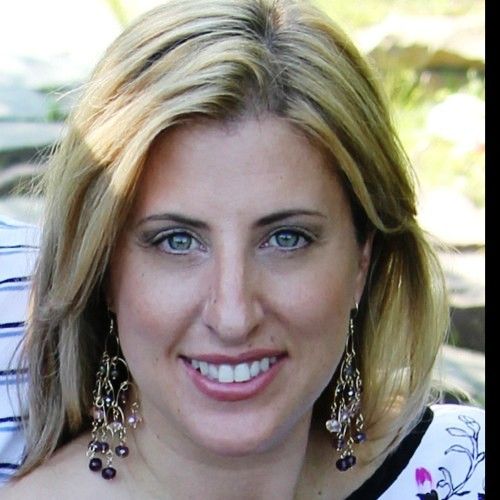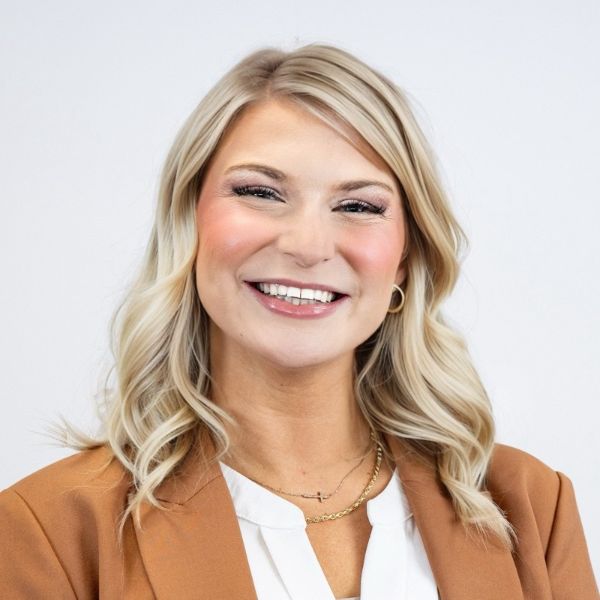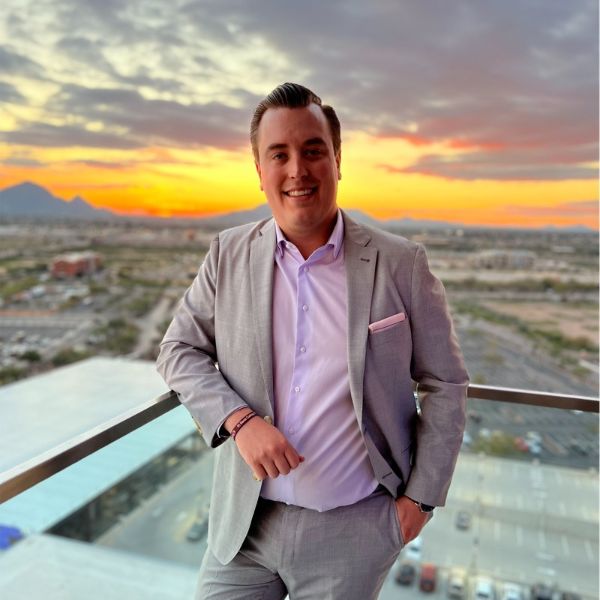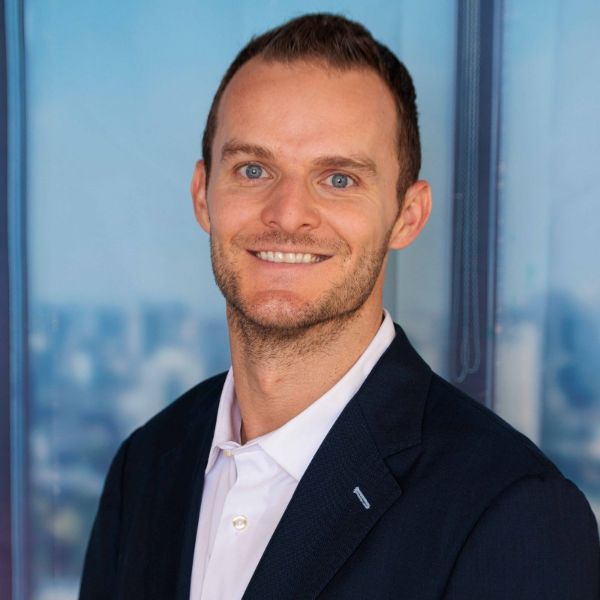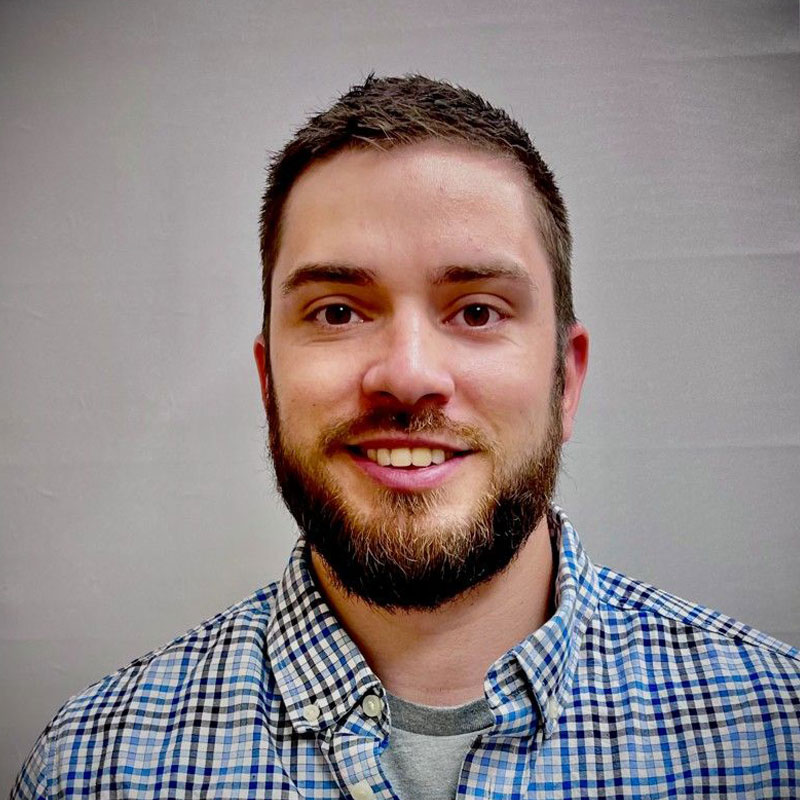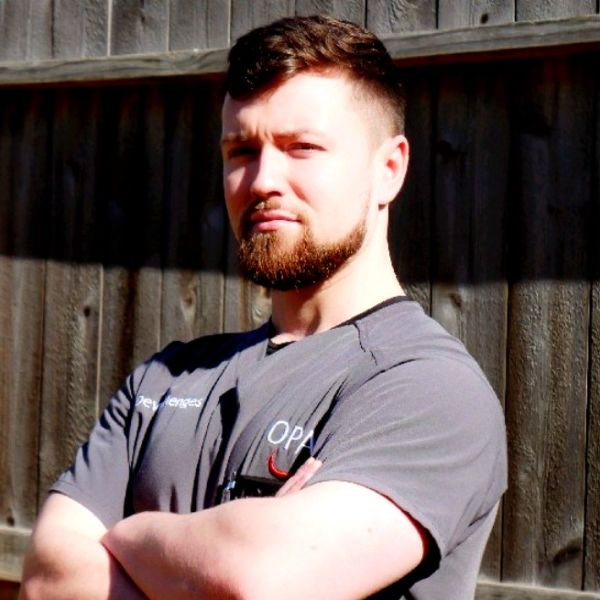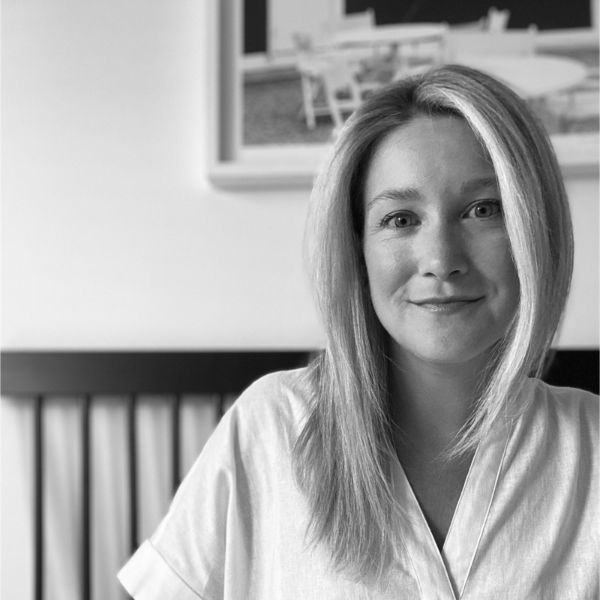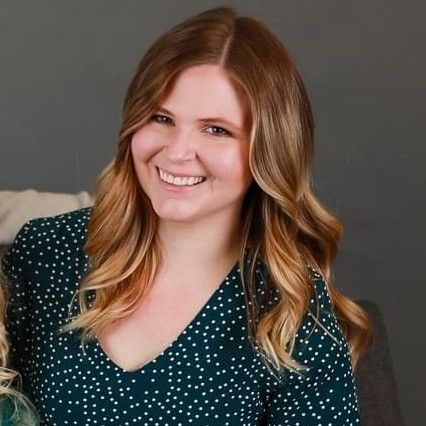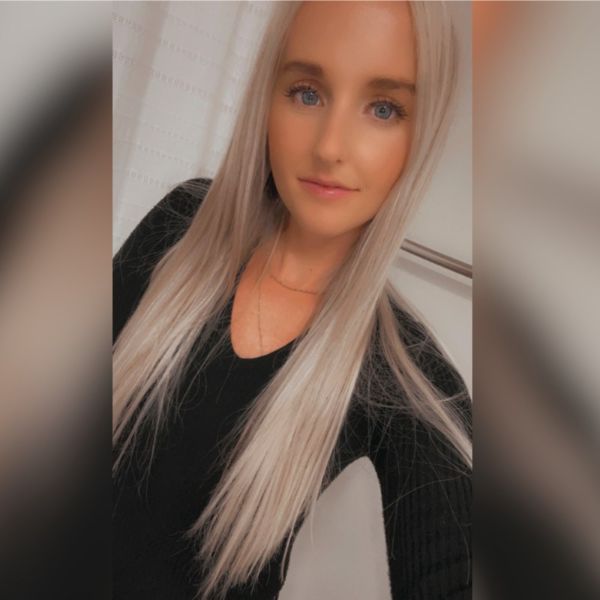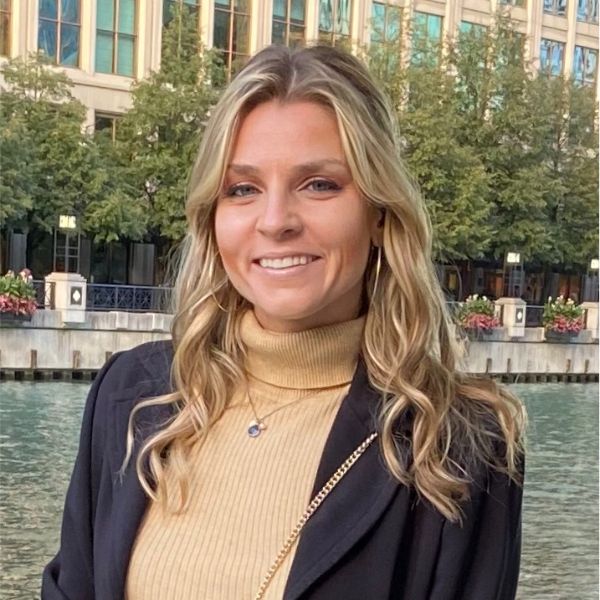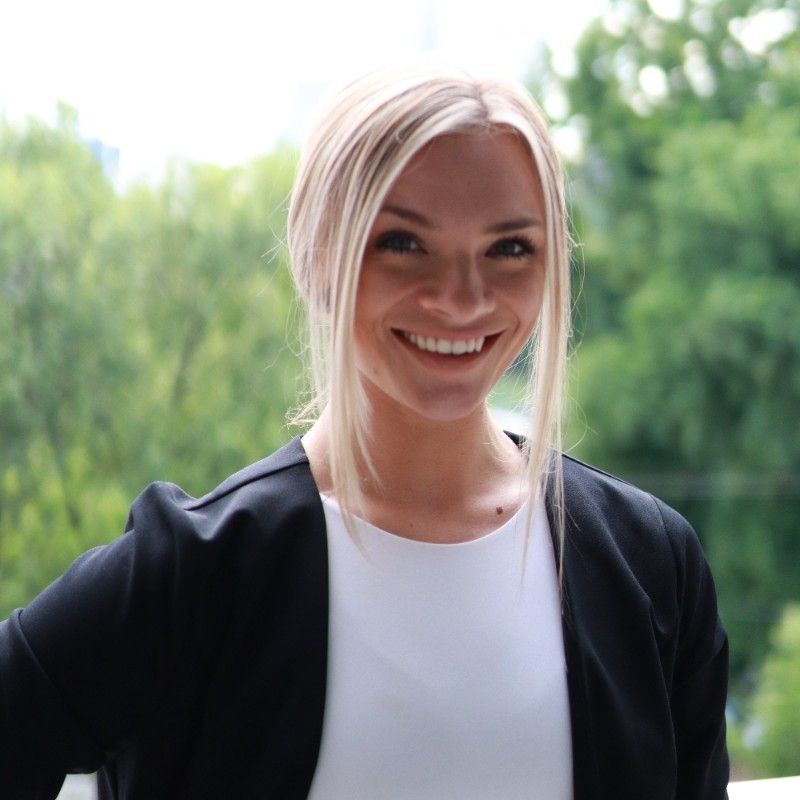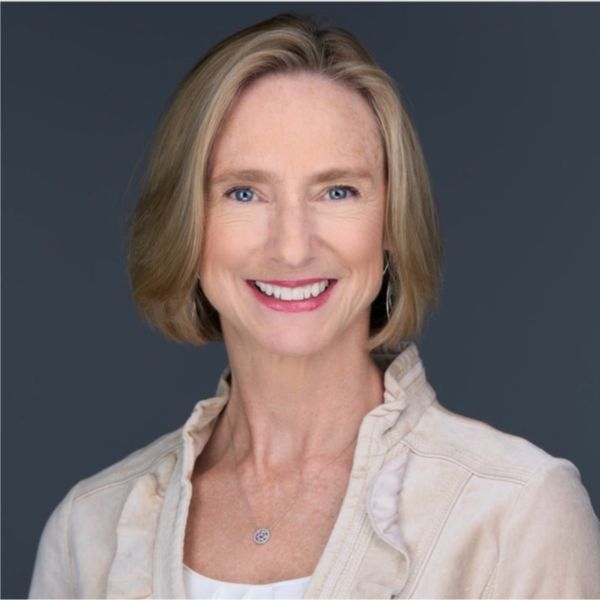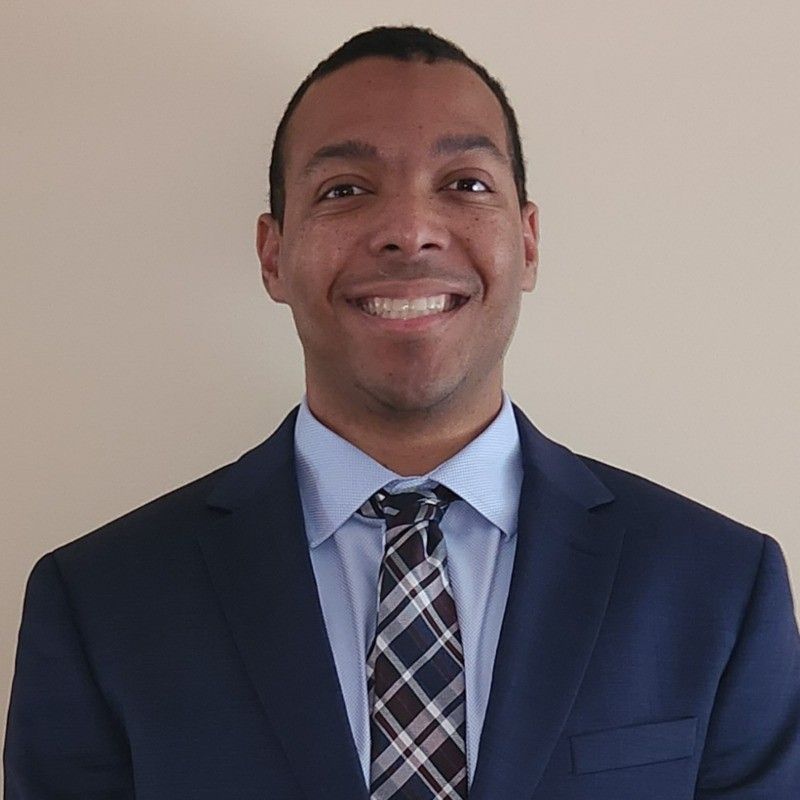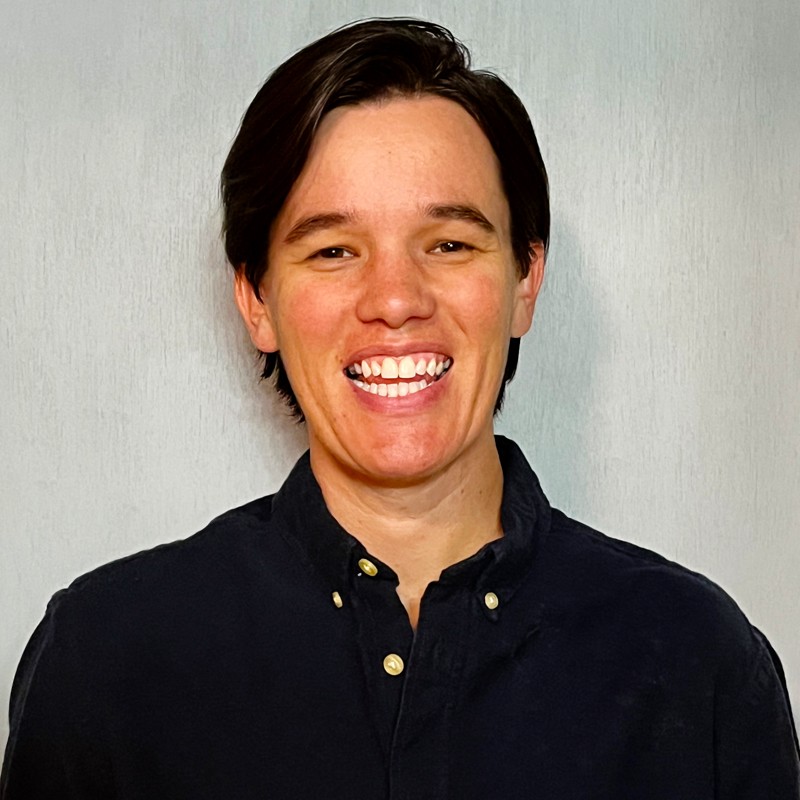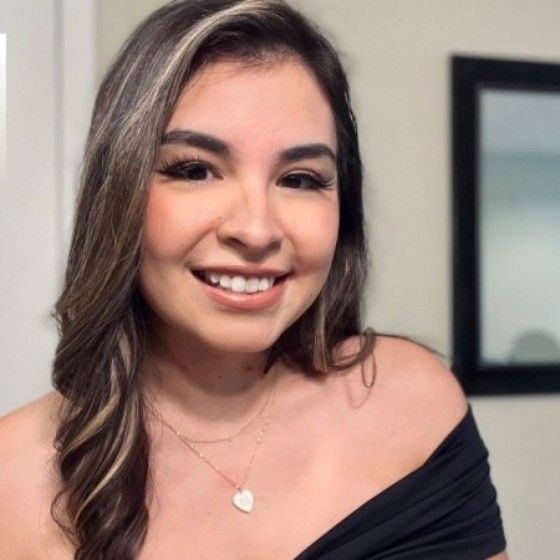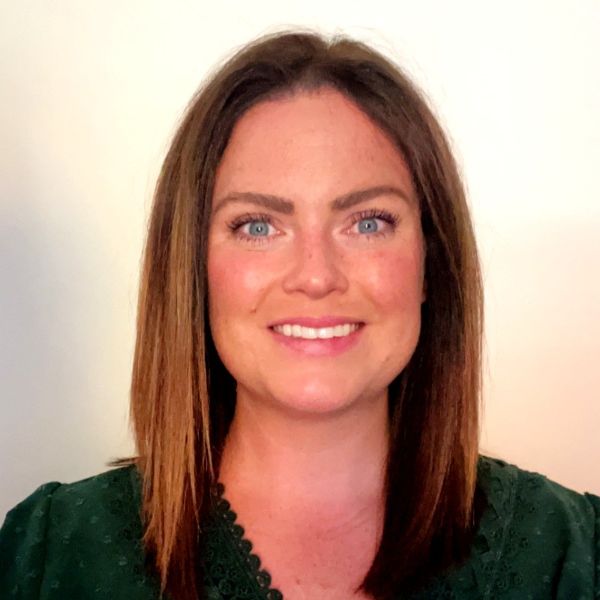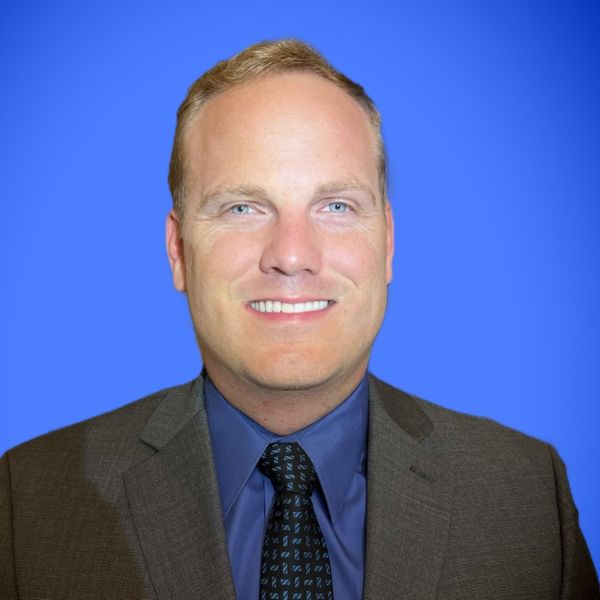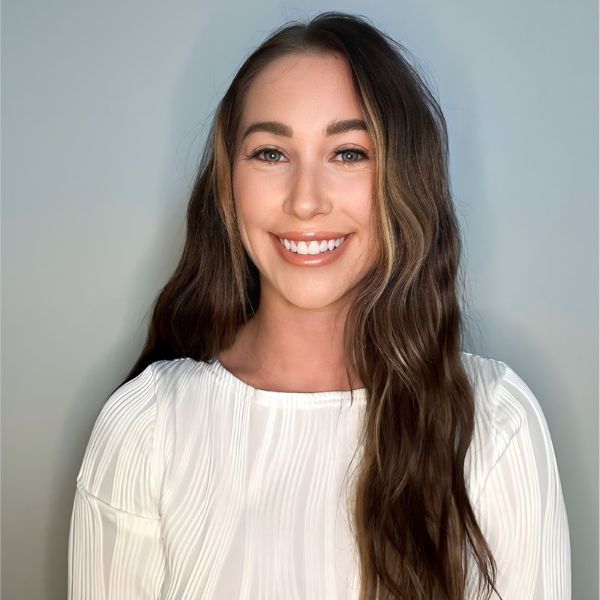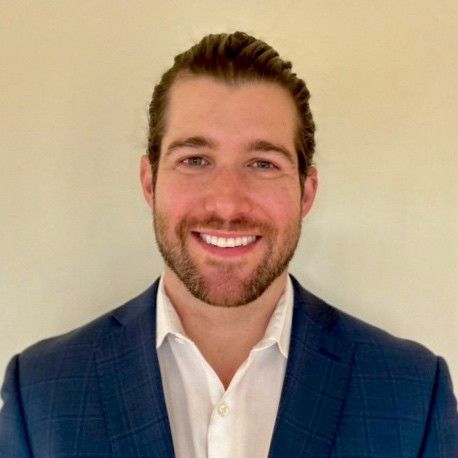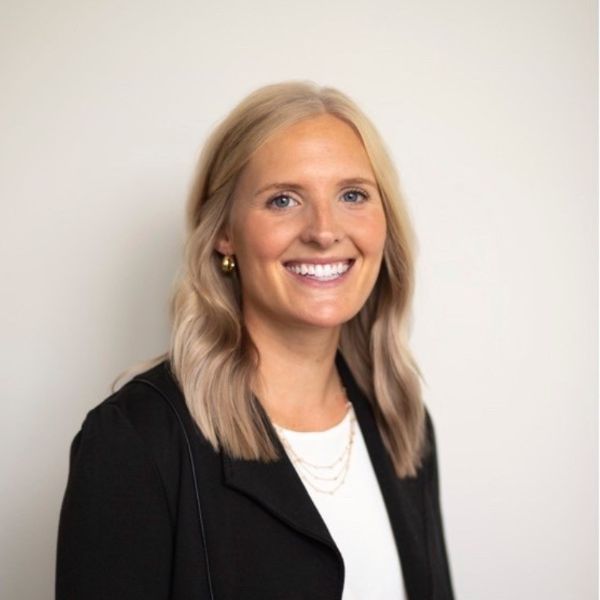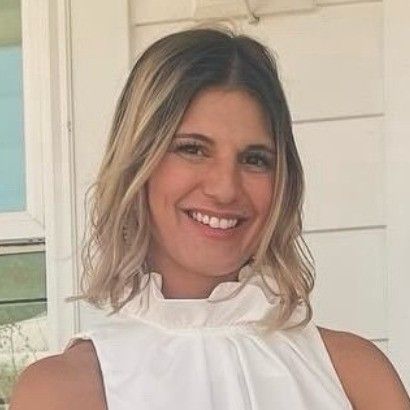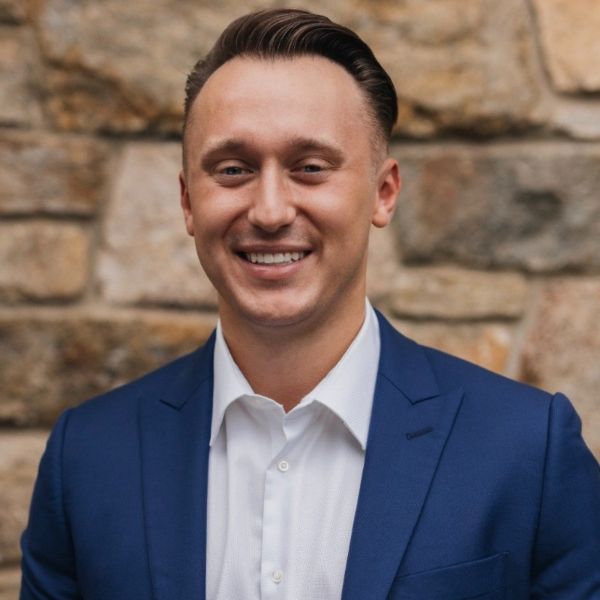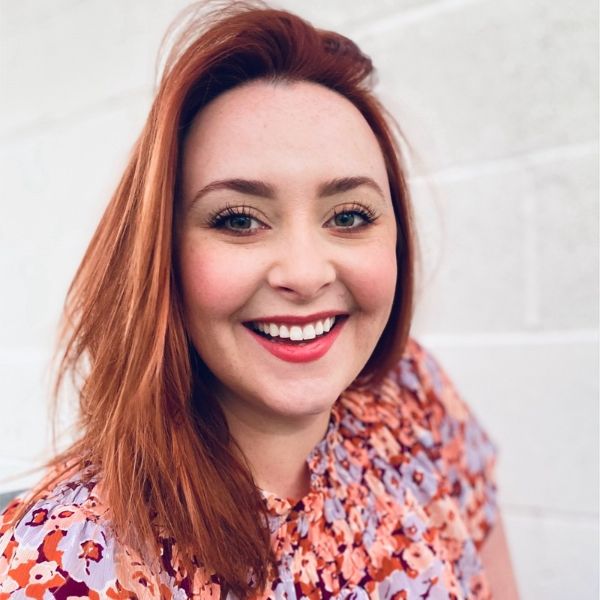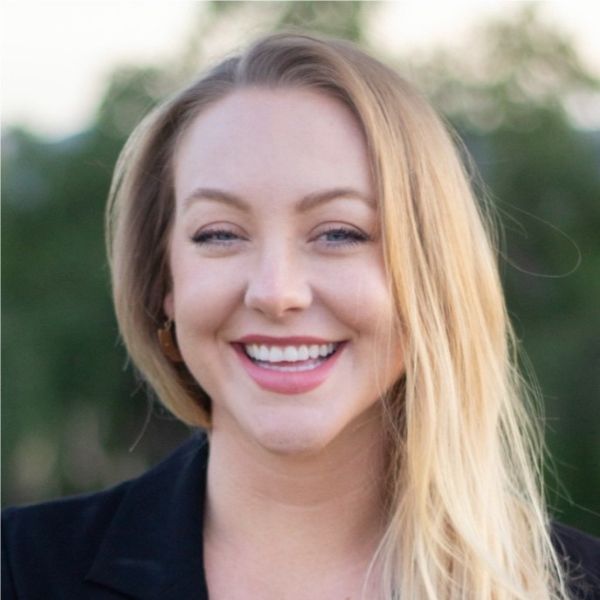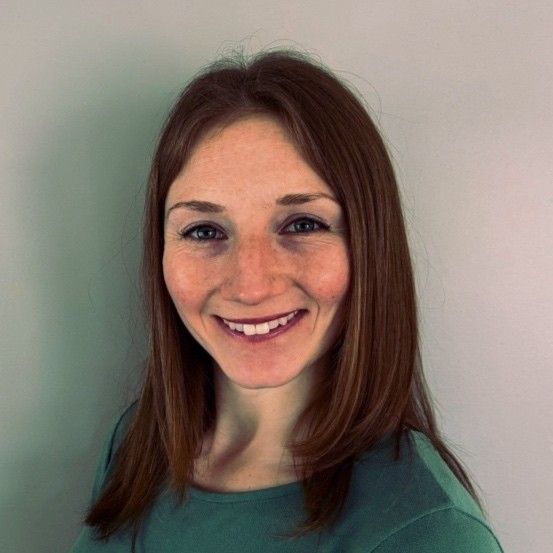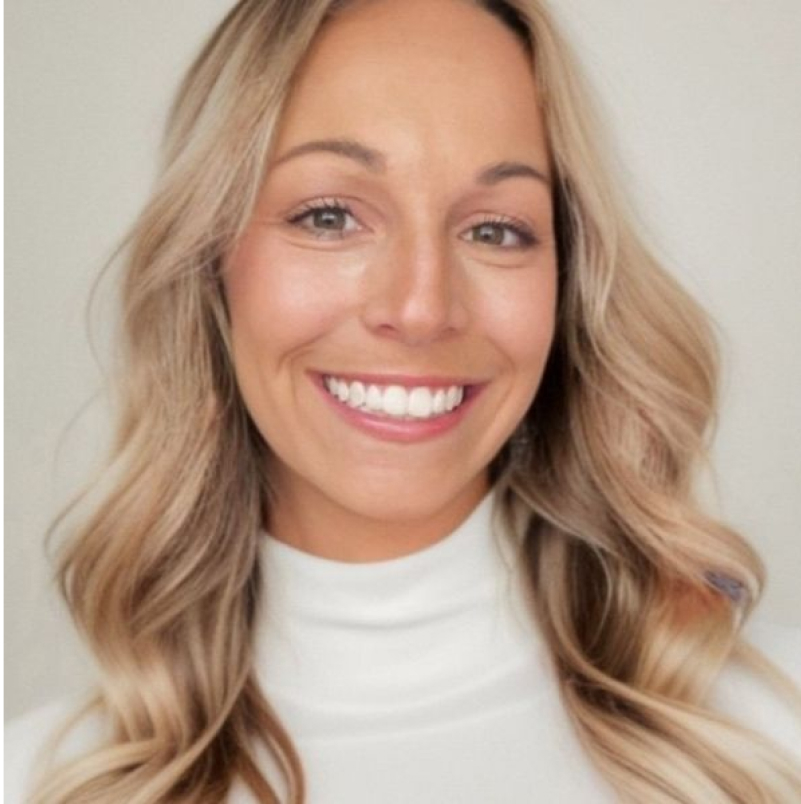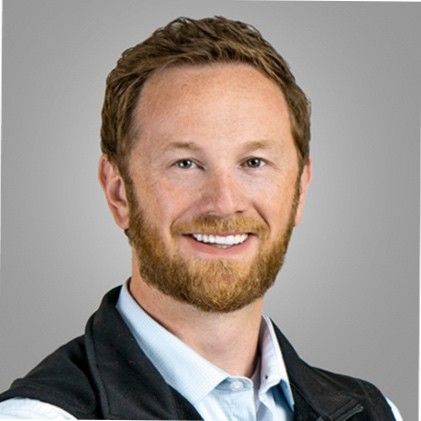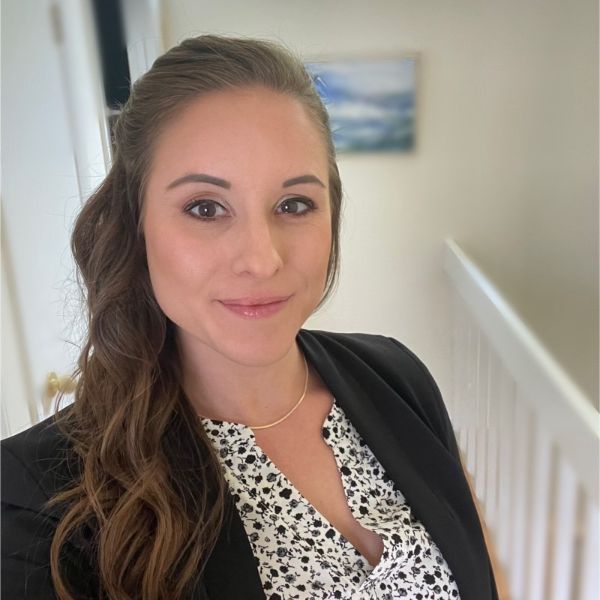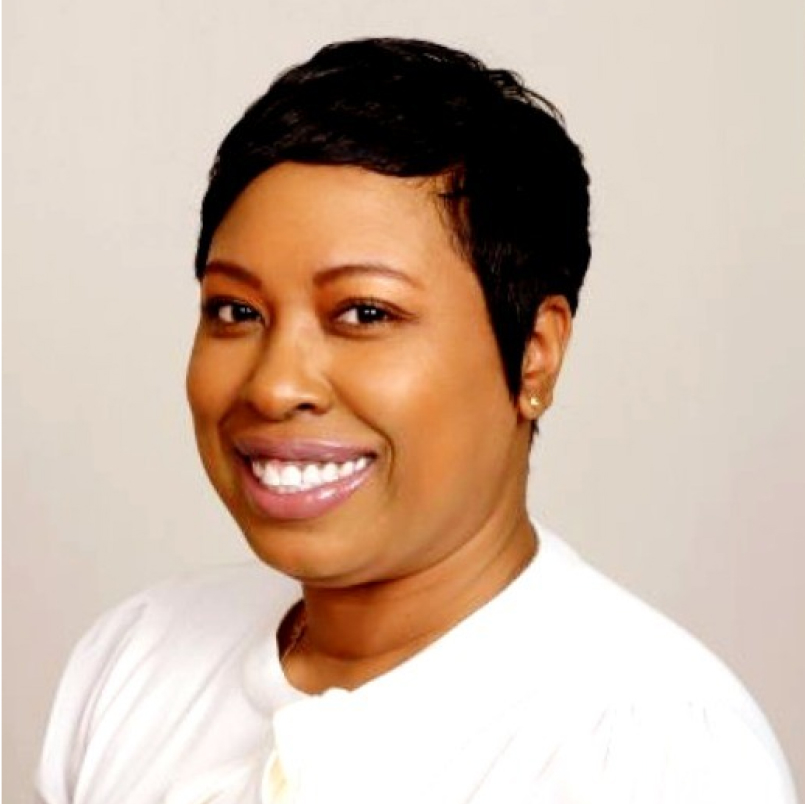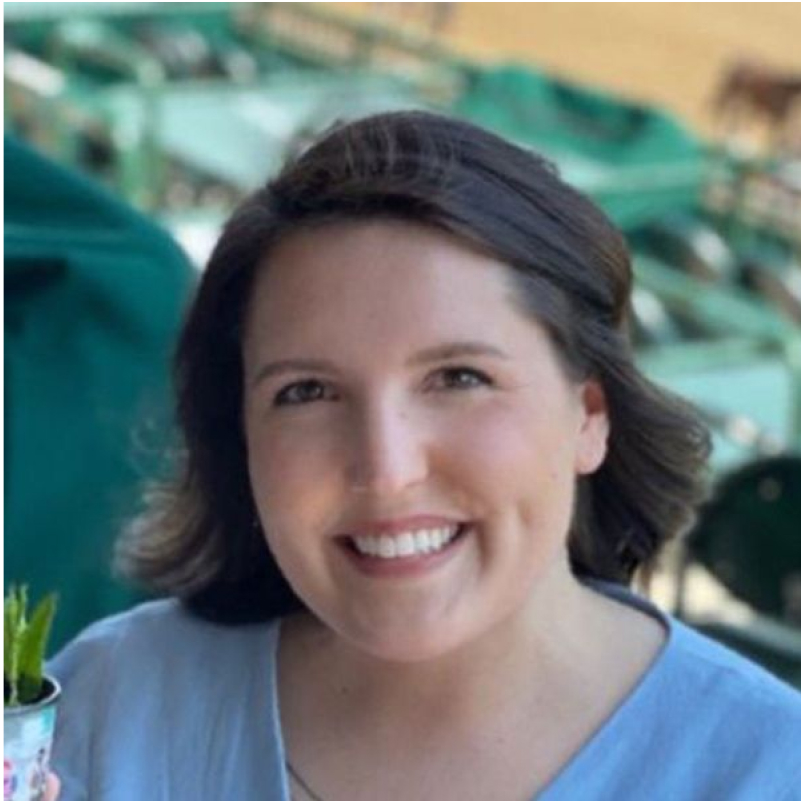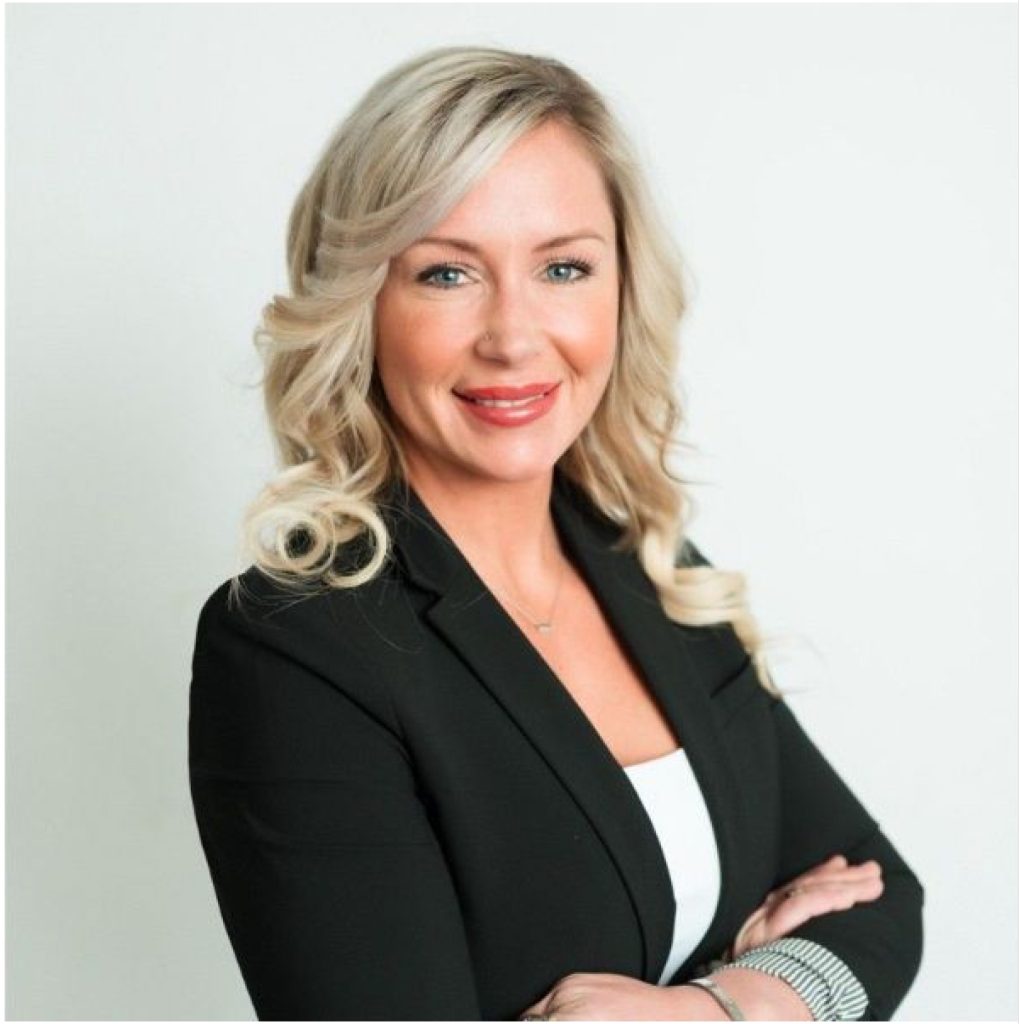Unlock the secrets to mastering medical sales and marketing in our latest episode featuring TJ Quigley, Marketing expert. TJ brings a wealth of knowledge about targeting emergency department doctors through precise messaging, the significance of measuring marketing outcomes, and the dynamic strategies his team employs based on real-time feedback. His insights into the role of digital marketing in the respiratory healthcare space are invaluable for anyone looking to elevate their marketing game.
Discover impactful strategies for sales success as we tackle the challenges of excessive spending and the expectations of new buyers. TJ shares eye-opening stories about the importance of transparency and data-driven presentations in negotiations. From securing high-stakes meetings to crafting memorable leave-behinds, TJ’s tips are essential for overcoming hurdles in the healthcare sector. You’ll also learn about the value of clinical support and the art of aligning your product with specific hospital needs.
Finally, we dive into the evolving landscape of digital marketing for medical devices, the critical balance between clinical knowledge and sales skill, and the future trends that will shape the industry. TJ offers practical advice on driving traffic to sales booths, engaging healthcare professionals online, and leveraging AI for more effective marketing strategies. Don’t miss this episode packed with actionable insights and forward-thinking perspectives that will leave you better equipped to succeed in the competitive world of medical sales and marketing.
Meet the guest:
TJ Quigley’s career is marked by driving growth through strategic marketing and the development of innovative training programs. His approach integrates sophisticated CRM systems to optimize customer engagement, as showcased by the transformative project at Iterative Scopes, which resulted in a 10X site expansion.
With a keen eye for market trends and a talent for empowering sales teams with effective collateral, TJ’s efforts have consistently translated into measurable sales growth. The success is underpinned by a commitment to continuous learning and leveraging healthcare technology to achieve outstanding results.
Connect with him: https://www.linkedin.com/in/quigleytj/
This Podcast offers a pathway to continuing education via this CMEfy link: https://earnc.me/di2w1h
Watch the episode here:
Or Listen to it on your favorite platform:
Love the show? Subscribe, rate, review, and share!
Join the Medical Sales Podcast Community today:
This Podcast offers a pathway to continuing education via this CMEfy link: https://earnc.me/vv0scc
Episode Transcript
00:07 – Samuel Adeyinka (Host)
Hello and welcome to the Medical Sales Podcast. I’m your host, Samuel, founder of a revolutionary medical sales training and mentorship program called the Medical Sales Career Builder, and I’m also host of the Medical Sales Podcast. In this podcast, I interview top medical sales reps and leading medical sales executives across the entire world. It doesn’t matter what medical sales industry from medical device to pharmaceutical, to genetic testing and diagnostic lab, you name it you will learn how to either break into the industry, be a top 10% performer within your role or climb the corporate ladder. Welcome to the Medical Sales Podcast and remember, I am a medical sales expert, sharing my own opinion about this amazing industry and how it can change your life. Hello and welcome to the Medical Sales Podcast. I’m your host, Samuel, and today we have with us another special guest, and he goes by the name of TJ Quigley. TJ is Director of Marketing at Fisher Peichel, a healthcare company that makes products in the respiratory space.
01:14
In this episode, we go deep into what it means to be in this kind of space as a rep, from med device to the supply side, what it means to get access to make business work and, of course, what it means to be in marketing, especially in this digital era in 2024, where so much business happens online, this is the kind of episode you don’t want to miss. Make sure you tune in. Pay attention If you’re someone that wants to get into medical sales, you got to hear this. If you’re someone in medical sales, you got to hear this. And if you’re someone that just likes good content, gotta hear this. As always, we’re doing our best to bring you innovative guests that are different in the medical space, and hope you enjoy this interview. Wow, that’s cool. I mean, is that something like you thought about doing on your own a hobby, or you just yeah, time is crazy.
02:00 – TJ Quigley (Guest)
I’m in marketing right, so it’s like, with two kids, kids and a wife, not a lot of spare time to dive into it. I’ve um dabbled in bleacher report a little bit to do some kind of stuff on that as far as sports are concerned, for the la chargers and stuff like that.
02:17 – Samuel Adeyinka (Host)
So wait, wait so you did a podcast for the for the la chargers yeah, yeah, yeah, you gotta tell me about that? What happened? What was that about?
02:26 – TJ Quigley (Guest)
no, it’s just, it’s just, it’s just um. You know, there’s a bunch of um. There’s a guy on there right now called the director that does most of the stuff for um Bleacher Report, for the Chargers and stuff, and I’ve sat in on a couple of them and I’ve worked with them on a couple of things and stuff like that.
02:39 – Samuel Adeyinka (Host)
So, yeah, that’s awesome. I love that. I love that. Okay, so we’re going to do this a couple different ways. We’re going to get into everything about you, a little bit about your company. If think that you’re responsible for the image that this company is trying to represent online, offline, everywhere and I’m assuming that you are probably spending more time online driving the narrative for that image than any other space Fill in the gaps.
03:21 – TJ Quigley (Guest)
Correct me on whatever I said that may be out of place yeah, no, I I think the key thing with you know, as a senior marketing kind of strategist, right, there’s a lot of a lot that goes into that. So you’re completely right, online is a big focus on that. But I like to say it kind of depends, right, it depends on who you’re trying to get to right, some docs or nurses or individuals spend more time online than others, and so that’s the beauty of online, right, I can target people that I want to target to get the narrative to them, to get the message to them that I want maybe to reach them, to invite them to a conference or just to bring kind of a disease state to their front of mind. You know, if you’re talking to an ED doc, right, their whole goal in life is to triage the patients and get them out right, get them somewhere else. They don’t have a lot of time for this. They’re getting bombarded by marketers like me all the time.
04:17
So you’ve got to be very clear, concise and can you distill that complex whatever it is complex procedure or complex medical device into something so that it drives value for them. So that’s kind of the big challenge and it’s a very iterative process, right, from what I’ve learned is you know you got to test it. You know we’re going to talk more about it later, but I’m a big believer in the old school thinking if you can’t measure it, you can’t manage it. Right, and that goes big time with marketing. Right, you’ve got to be able to measure things, and that is key for online, especially right when I got to do my year end review of my budget and how it went and why do I need more or less? I better have been updating people on the successes and then also maybe some of the ones that didn’t work out so well, and why didn’t they go well and how did we pivot?
05:05 – Samuel Adeyinka (Host)
uh, accordingly, okay so you know our audience. A bunch of people are medical sales in our audience and, and just to be specific, they’re on the sales side, the commercial side, you know, and I know that the relationship between marketing and commercial is there, but some companies it’s a beautiful symphony and some companies I don’t like that person right. So I don’t know what it is where you are. But we also have a lot of people that are not in the industry, that listen to us, that want to get into the industry. So they really don’t have any context around what we’re talking about right now. So let’s go back to a 30,000 foot view. What are you responsible for? Why does your company? Well, introduce your company and your name. I’ll let you do the honors in a second, but after you do that, explain what you are doing for your company from a 30,000 foot view and what you’re responsible for dragging.
05:57 – TJ Quigley (Guest)
Yep, I’m going to kind of do it like a little twofold, if that’s okay, with marketing and sales and kind of how they cross over, because I think that’s where you see the see, the successes you were alluding to earlier. So like marketing builds awareness, drives um interest and creates demand and then sales has to convert that demand into revenue, right. So that’s like kind of like a high level, 30,000 foot view of what we’re going to do, right. And so you know, how is marketing kind of approaching that? It’s like I as a marketer have to understand the market, just like I was talking about ED docs and their time and what do they need.
06:33
You know, what does that ED doc need, for example? And then how do I help the salespeople communicate those kinds of value props? Because for people that don’t know about selling to doctors or trying to get into medical device, right, the days of features and benefits sales are over. You really got to come in and drive and drill into that value prop of what you’re doing to help either increase workflow Am I reducing cost? Am I improving patient?
07:02 – Samuel Adeyinka (Host)
care, Whatever it is.
07:03 – TJ Quigley (Guest)
I got to come in and help the sales team come up with a message and do it, and so it’s like a two way street, right it’s. It’s not me just coming up with the message with the team and then sending it over the fence and say good luck. Right, I got to be out in the field with those salespeople to see what’s working, because it may sound good at the office.
07:22 – Samuel Adeyinka (Host)
It sounds great and then I get out there and they look at me.
07:26 – TJ Quigley (Guest)
They’re like what kind of BS are you trying to sell?
07:28 – Samuel Adeyinka (Host)
me here. So let’s qualify that a little better though, because I hear that a lot. I know that I know exactly what you’re talking about, but again, I want to do it for the audience. So you said that the days of features and benefits selling are over, and now it’s. It’s much more about what is my me as a customer, what is the specific value proposition? You’re trying to help me see. Qualify that a little bit more.
07:53 – TJ Quigley (Guest)
Give us a little more example of how it’s changed. So the the big shift that’s happened in healthcare kind of happened around 2008, 2009,. Right, if we’re going to go back in the day. Right Prior to then, money was very plentiful in the healthcare industry there was money everywhere right.
08:10
You could walk in as a sales rep say I’ve got the new greatest feature, it’s got this laser, it’s got this HD or whatever it is, and they would sign up for it right After that, money dried up, people realized, man, we’re just pumping money into this healthcare. And and after that money dried up, people realized, man, we’re just pumping money into this health care and it’s not getting us any returns. It’s not working how we want. We’re losing money. And they started looking at that.
08:31
Plus, at the same time, a lot of these docs used to be kind of sole proprietors and now they’ve kind of shifted away to where they’re actually employees of the hospital. So instead of the docs being the ones that are making the decisions, now nine times out of 10, you go in and you’re bringing a product in there that’s over $5,000, let’s say it’s going to go to an executive committee to approve. The doc can’t make a decision on that right. And so you’ve got to be able to convince the doc that they want to do it. And then you got to give the doc data, information, whatever it is, so that they can present it to the committee, because they don’t want us presenting it. They want the doc to talk about.
09:09
Why is this so important and why do I have to do this? And these committees goals are all about putting you into a box. Right, can I put you into this box and then lower the price as much as possible? So if I come in and just do features and benefits, I’m not going to get in there, I’m not going to sell it. They’re going to be like do futures and benefits, I’m not going to get in there, I’m not going to sell it. They’re going to be like this isn’t valuable.
09:27
I got to figure out what is the value driver that is going to move the needle so that, for lack of a better term, these bean counters can understand from a clinical perspective, what value this is bringing to the hospital. And that is really tough to do, especially when these bean counters, as I was talking about earlier, they don’t understand the clinical side right and then vice versa, the clinical, the doc, doesn’t understand the business side right. So we’re, like these intermediaries, trying to help them, educate them, get them up to speed so that they can talk clearly, concisely, to these bean counters on these executive committees.
10:04 – Samuel Adeyinka (Host)
That was gold the way you lay that out, like that was crystal clear. Okay so, but let’s talk about it. So, basically, you’re saying it’s a multifaceted effort now and you and you have to hit it all these channels to even get a seat at the table. Give us you know, walk us through how your company makes that happen. You know, give us you know, walk us through how your company makes that happen. You know what does the team look like for commercial. You know what’s the makeup, who’s doing what? How do you drive that with Fisher Payne?
10:35 – TJ Quigley (Guest)
Yep. So you’ve got to take a look at like the sales rep is definitely the first line of defense is the way I like to call it right. They’re the ones that are living and breathing on the floor, on the hospital floor. They might be going into the ED, they may be going into the ICU, they might be going into the PICU right From a pediatric perspective. So they’re the ones that are kind of going in that side right. And then you’ve got kind of marketing helping them right, trying to support them with the messaging, with the tools, with the messaging with the tools, with the collateral, the presentations, all that stuff. We’re helping them with hitting them from the bottom. And then there’s kind of like the top side as well. So another angle if you’re just getting a sales rep pushing up from the bottom, you might get some activity. But you also have to do kind of a top-down approach. And that’s where these corporate accounts teams come together right, and what they’re doing is they’re heading on kind of that level above that executive committee. They’re kind of coming in and they’re establishing those relationships with them. They’re walking them through quarterly business reviews, kind of walking through here’s how much spend you’ve got, here’s what you’ve done that whole kind of thing. That’s again driving awareness of this.
11:48
I’ve had an example where we had a rep that was just banging their head into the ground trying to get into Cleveland Clinic. Years and years, and years wasn’t moving the needle. It’s a very tough hospital system to get into. It took the corporate accounts individual talking to their contact over there going through a business review. They did a double take. What do you mean? We’re spending $5 million on you. We had no idea that we were doing that. Wow, we’re spending $5 million and I had no idea that’s a problem. What else do you do? What else do you? Oh well, we also do anesthesia, we do urology, we do all of these different products.
12:20 – Samuel Adeyinka (Host)
Oh man.
12:21 – TJ Quigley (Guest)
I didn’t know that. So then we came in and literally did a product fair for them, for that executive committee that I was talking about. And so that’s that two-prong approach that I was talking about. Right, you’re hitting them from the bottom, so you’re driving so that you’ve got the support of the docs, but at the same time you got to hit them from the top down, so there’s awareness of what you’re doing and how you’re trying to drive change in clinical practice.
12:44 – Samuel Adeyinka (Host)
Beautiful. Now let’s stick with that example of the Cleveland Clinic. So how difficult was it to get an opportunity to let them know that they’re spending too much money in this area and they need to make some changes?
12:58 – TJ Quigley (Guest)
You know, life’s all about timing right. 95% of this stuff is about timing. There was a new buyer that came in, and usually that’s a good thing or it could be a bad thing, depending on the relationship that you’ve had with that particular individual that had the role beforehand. In this case, we were a little worried. She had a background of being pretty tough at some other systems out there and we were a little worried about kind of what it was going to look like and so we were a little nervous going into the meeting. So, from a marketing perspective, I kind of helped set up the deck and we worked through kind of the key messaging that we wanted to go through and this was again a conversation where you’re shifting away from this products and features and benefits kind of stuff and we had to drive into the value like what are we doing as a company to, to, to bring that value?
13:46
Came in, gave that presentation. It was literally a half an hour and I think, like I said, the jaw dropped on like $5 million. We had no idea and we thought it was a bad thing. I thought it was a bad thing based off of the reaction that we saw, Cause it was like I’m spending $5 million. I had no idea I was spending $5 million and you do this, and that we’re like, oh no.
14:07 – Samuel Adeyinka (Host)
So was this accurate, the $5 million that you guys discovered, or was this more of a generalization based on whatever data you could get about the Cleveland Clinic, or you just knew for sure?
14:19 – TJ Quigley (Guest)
Yeah, it was accurate. It was off of our own internal data. What our spend was there. So we knew what they were spending.
14:26
But that’s what a lot of people don’t realize these buyers don’t always go into the details too much. You know what I mean. A lot of times these products are siloed into different groups, so you may have a buyer that’s just focused on ortho, or you may have a buyer that’s just focused on surgical or whatever it is. They don’t necessarily always talk, and so when I came in to talk to this buyer and it was just for surgical but I also showed the other stuff that’s when you know you got a good buyer and she’s like, oh whoa, we got to talk about this because I want to make sure we’re leveraging everything that you guys can offer and, more importantly, as a buyer right, they want bulk deals, right. So if they’re just looking at it as a silo and it’s $600,000, but then you look at the bigger pie and now it’s $5 million, well, now we’ve got some more negotiation leverage on kind of what we’re going to do, so kind of open up the pie for everybody.
15:13 – Samuel Adeyinka (Host)
For that example, who’s the ultimate decision maker in a scenario like what you just described?
15:19 – TJ Quigley (Guest)
Yep, usually it’s the buyer. To be honest with you, sometimes those buyers are on committees and there’s like a super buyer for lack of a better term you know that that’s the boss. That’s kind of overlooking all of those different silos, all those different product groups that I was talking about earlier, going to make a decision on that, and so that’s kind of why it’s so important that when you have these corporate accounts, individuals that they’re, they’re focusing in on building those relationships with the buyers and, more importantly, that they don’t like surprises, right, like that’s. The biggest thing that I’ve learned with this is I’ve seen situations where we didn’t show the $5 million right, we just showed the $600,000. And then they found out that we were spending $5 million. That didn’t go as well. That was not a good. So I think being as clairvoyant, being as upfront as you can be with these buyers and just walking them through it, I think is the best way to approach it.
16:15 – Samuel Adeyinka (Host)
Yeah, it makes all the difference. Okay, so now we can kind of really see the difference between selling some of the features and benefits and getting to the heart of an issue and letting them know that, hey, we’re here to save your issue. When you normally get the attention of a buyer with any potential customer, is it easy to close. When you show them what you showed something like the Cleveland Clinic, you know? I guess what I want to know is is the challenge trying to get the time to show Cleveland Clinic what you showed them, or is the challenge still delivering the proposition? That’s going to be enough urgency for them to want to take action.
16:52 – TJ Quigley (Guest)
So do you hit the nail on the head, man? So it’s like getting that. That meeting, like you said, like you were teeing up a little earlier, that’s. That’s a good, big, hard part of that. Right, if they don’t see any value, they’re not going to take the time to meet with you, and then all right, then it’s falling on deaf ears and we’re not doing it. But then the flip side is going to be all right, cool, I get that meeting.
17:15
Marketing and sales. We all put this deal together. We put this deck together and I’ve presented it before and it falls on deaf ears. They’re like I don’t, we don’t. I’ll just use an example. Right, we didn’t. We don’t have leak rates here. We don’t have any leaks when we do our anastomosis. So why are you talking to me about a product that’s going to reduce my leak rates? You don’t know anything.
17:35
We left that meeting feeling like the dumbest people in the world. So you know what we did. Right, what is marketing supposed to do? Marketing is supposed to go back and look at the data. Right, help with the data. We went back, we got an agreement with Definitive and started diving into these accounts. So if we’re going to come in and present this value differentiator that I’m talking about. We better know for sure that they got leaks at these hospitals, right? Otherwise I’m talking on deaf ears.
17:58
I mean, I didn’t expect a buyer to know that, right. It just so happened that this buyer had a surgical or clinical background and knew kind of a little bit about that and was like no, I ain’t moving the needle, I’m not spending $120,000 for that tower, for example, right. So I would say it can kind of go both ways, right. And especially with a system, right, like you’ve got all these systems where you’ve got one hospital where you could get in, you can have this conversation with the buyer there and if you’re showing success, right, maybe you’re driving more efficiency.
18:32
Maybe you were able to get with quality and show how this reduced the amount of length of stay for pneumonia patients, whatever it is. You can show that in that one system. Then it can blow up out of there very quickly because these buyers talk to each other in these systems, right. So it may be just for Baycare in Tampa, right. Baycare’s got 10 other systems all throughout Florida. All right, cool. Once they showed success there, then they start talking and it kind of blows up from there, that makes sense, that makes sense.
19:02
So going back to getting their attention what has been?
19:08 – Samuel Adeyinka (Host)
how has things changed pre? And first of all, say if things haven’t or have not changed, how have things changed pre and post COVID, when it comes to securing that meeting to make the case, yeah, they don’t want to see us. They’ve never wanted to right.
19:24 – TJ Quigley (Guest)
They’ve never wanted to us Um, they’ve never wanted right, Like they’ve never wanted they never did.
19:26
But I think you know it’s kind of like you hear um, Amazon’s going back to the office full time, Right, and everybody doesn’t want to go back to the office. It’s the same kind of scenario here, right, Like they have their businesses. They used to. I would say, pre COVID, you used to see where you had buyers more aligned by product groups, right, so you had a buyer that was in charge of GYN ortho surgical video, like a bunch of them, and kind of post-COVID coming out of that. You know, these hospitals had to tighten up belts and stuff. Now a lot of these buyers are managing multiple categories so they just don’t have time. I mean it’s hard, right, it’s hard Thousands and thousands of SKUs that they got to manage, right, I’m just one little piece of that right, trying to get that mind share.
20:15 – Samuel Adeyinka (Host)
Yeah, yeah, yeah.
20:16 – TJ Quigley (Guest)
Trying to get that mind share. So, from a marketing perspective, one of the biggest things that I’ve realized that has been super helpful is just putting together a little one pager to help leave behind, and I call the value analysis brief. And why has this been so successful? A lot of times we’ll go in, we’ll talk to them, they’ll look at you. You know, maybe they’re picking up 5% of what I’m putting down and then you leave right, and then what happens down, and then you leave right and then what happens. Well, I have a cool little value analysis brief that I’ll leave behind. That just highlights the top three things related to what we talked about. Here’s how it’s going to move the needle for your hospital and, more importantly, this has to save you money or whatever. It is right In the long run. This is what it’s going to do. They look at that. That stays on their table. It’s kind of old school. I know we kicked this off with talking about digital and there’s definitely a part for digital, but again, having it on just like one page, the rep can go in and talk to it. It can be a leave behind so that they can talk through it. Yeah, there’s a concern that a competitor will pick it up and you’re like you know I’m giving out my secret sauce here. Well, it’s not so secret. This is what we’re trying to do and this is how we’re going to save you money. Let’s get on board, and so we’ve seen a lot of success by doing that and keeping it top of mind and having a cool breakout.
21:34
Also done some cool little boxes. You know where you stuff in if it’s a consumable. You you make a little box you know you know it costs about 20, 30 bucks and you leave it behind. And it you a little box you know you know cost about 20, 30 bucks and you leave it behind and you open it up and there’s the product and maybe a couple of those value analysis. Recently I’ve gone back to hospitals. Like four or five years later they still have that box on their desk, right, so little things like that.
21:54
That’s what you got to do, right, to think about how you’re going to increase that mind share. How are you going to make sure they remember it is coming in and giving something that’s going to make you stand apart, right, just like everything in life, but it’s driving that insight so that they really care. I’m not just coming in and just saying you know our product’s going to save you thousands of dollars. It’s like look, I looked at your data. You got some pretty high leak rates over the last three years. I think this product can make a difference. Let me walk you through that. That’s a much better conversation than just coming in. Oh, I can eliminate your leak rates here, right, that doesn’t move the needle.
22:27 – Samuel Adeyinka (Host)
But if you come up with that insight, it makes a big difference. That’s well said, okay. So, then, what you basically shared is that your customers are looking for you. They’re trying to find a meeting with you because your sales rep has left this incredibly insightful lead behind. That’s garnered some interest, and now they’re like you know what? You know what? Let’s let’s have a meeting today. Let’s let’s get together. That’s how it’s been going.
22:53 – TJ Quigley (Guest)
Okay, it can be. And, and it’s also again, it is not just the rep chirping in, it’s also the clinical side, right? So if it’s just the rep getting this meeting and they’re driving it, I’d say your hit rate’s going to be 20% if you’re lucky maybe lower.
23:11 – Samuel Adeyinka (Host)
You need to have the clinical support.
23:14 – TJ Quigley (Guest)
And then this is where the magic happens and this is where it’s the hard part, right? Every hospital is different, right? I’ve tried to replicate the success that I’ve seen in Baycare, I’ve seen at Cleveland Clinic, and it doesn’t work. It’s not turnkey, right? Sometimes you’ll go into a hospital and you run into this individual that’s worked there for 35 years, they’re retiring in a year and they don’t care, they’re not changing anything, right?
23:38 – Samuel Adeyinka (Host)
It happens right.
23:40 – TJ Quigley (Guest)
So does that mean it’s not going to happen? No, that just means you’ve got to find another champion at the hospital can do that, and it could be anybody. I’ve seen a nurse do it. I’ve seen a medical director do it be super helpful. Usually ED docs won’t do it because they’re so busy, so don’t waste your time there.
24:00 – Samuel Adeyinka (Host)
Level up a little bit and go to the medical director. Try to find them. Who from your company is the person doing, not the sales rep? Who from your company?
24:07 – TJ Quigley (Guest)
yeah, still the sales rep. Um, because they’re again right like I’m giving them the collateral and they’re going out there, but they still got to find that person in the hospital. That’s going to move the needle right. Quality is another big one. Like I didn’t, I did not think quality was going to be the one that was going to push this deal across the finish line. I didn’t sure enough it did, because what they were trying to do is to reduce the length of stay for pneumonia patients.
24:30
I was just sitting there talking about the initiative that we were trying to do in the ED and the quality person overheard it. She’s like wait a minute, could this work for do you have anything that shows how this could reduce the length of stay for pneumonia patients? And we’re like yeah, no problem. Boom, that became a quality initiative. You want to talk about how successful that was? That was awesome, right? So I think if I think that’s a big disconnect that a lot of these companies I see right, cause I spent a lot of time in the ED in the field you see the rep, they come in, they talk to the ED doc and then they leave. One of the best advice I got from a sales rep in Chicago. I was doing a ride along with him and we came into the office or into the hospital in the back, parked on the back, went through the hospital, did our stuff, blah, blah, blah, blah, blah.
25:21 – Samuel Adeyinka (Host)
And if you know how hospitals are right.
25:22 – TJ Quigley (Guest)
They’re like mazes man you get lost all the time.
25:23
So we went out like like the front we went out the front, right, right, and I’m like why did we go out the front? Did you get lost? He’s like no TJ, you never know who you’re going to run into in a hospital and if I go in and out the same place that I came in and came out, I ain’t gonna run in anybody different. So I always make sure that I come into one one end and go out the other. Next hospital we went to, we ran into the doc that he’s been trying to get in front of for three months. Right, little things like that is is what I’m noticing that are making the difference is like you gotta, you gotta try to spread the awareness of your product not just to the buyer or just to that one person, that one doc. You gotta get a lot of people on board because you just don’t know who that champion is going to be these days.
26:06 – Samuel Adeyinka (Host)
everyone is making the decision. Everyone is making the decision.
26:09 – TJ Quigley (Guest)
It’s a total consensus right, these committees that I was talking about you know, it could be a nurse on that committee. It could be a doc on that committee. It could be a bean counter. On these committees they’re making decisions about this. How are you making sure that that your products at the top of mind when they’re going through it?
26:24 – Samuel Adeyinka (Host)
when did you have this experience with this rep?
26:27 – TJ Quigley (Guest)
oh, this is like five or six years ago. Where is this rep now? He’s still there. Still there. Okay, he’s successful kicking butt, taking names, absolutely fantastic that’s awesome okay, so, so let me.
26:41 – Samuel Adeyinka (Host)
Let’s let me get this straight that it sounds like if you’re still saying that, the well. Correct me if I’m wrong, but the majority of your marketing efforts are field-based movements, meaning you’re utilizing the sales team to get the right lead behind in front of the right person, to find who that right person is, and to pretty much put together the team of right people that you can get into a conversation with, to leverage whatever and close a deal. That’s what’s going on.
27:08
I would say that’s about half right, okay, so 50%, that’s about half what makes up the other 50%.
27:14 – TJ Quigley (Guest)
That would be about 50%. The other 50% is that kind of demand generation, that stuff that I was talking about earlier. So shows, right, people are coming back to conventions now. That wasn’t happening for a while, right? However, it’s completely different. You know, you asked pre post COVID, right? It’s completely different now than it was before COVID. Right Before COVID, you’d you’d set up a booth. People would come to the booth Maybe I’ll have a KOL given a quick speech and then the traffic at the booth was a lot more. I just have not seen it come back at all. Our traffic in our booths have plummeted. I’m talking like we’re spending you know two, three hundred thousand dollars and I’ve got 20 leads. Wow, like what? So that’s a big problem from a society perspective, yeah, but then that also puts the onus on me as a marketer, on figuring out how do I drive traffic to the booth, because otherwise we’re not getting leads.
28:13 – Samuel Adeyinka (Host)
So when you Some of that, Hold that thought, don’t forget what you were going to say. But when you say, drive traffic to the booth, you’re talking about getting more people to show up at the convention period, or you’re talking about whatever traffic exists, getting them to go to your booth.
28:27 – TJ Quigley (Guest)
The latter right. So getting them that are there to come to the booth there are so many again, you know, kind of like the same problem that we’re experiencing with the field is like there’s so much noise and so many people trying to get your mind share the same thing’s happening at these things. How do I give them a reason to come to the booth, right? How do I give them a reason to want to go to the booth and what does that look like? And what are some of the things that I’ve had success with? So, some of the things I’ve had success with from a marketing perspective um, we’ve put some, uh, like they weren’t invisible, but like invisible um steps that you had to do, uh, to get to the, to the booth. We put it in a door, a backdrop, right. So everybody got a backdrop in there. I had these glasses that could only see this little path that guided them to the booth.
29:17
It totally worked. That was a great one right. That was awesome.
29:19 – Samuel Adeyinka (Host)
Where did that idea?
29:20 – TJ Quigley (Guest)
come from. So we one um earlier where we sent them 3d glasses to come experience 3d, and I said, whoa, wouldn’t it be cool, as if we could, and that that worked great. I’m like, wouldn’t it be great if we could just put these little stickers on the ground that provide a path to our booth? And then we worked with the society and they did that. It wasn’t cheap but it I think it worked. It was really cool. You’d see people walking around with the glasses on and stuff like that. So that that was a fun one. Um, having a, having a, you know, I learned very quickly. Having you know coffee on the booth um is great, but didn’t move the needle, it didn’t drive people to the booth and half the time it was other vendors.
30:01 – Samuel Adeyinka (Host)
Yeah, all these other groups just coagulating around your booth. So that didn’t work, blocking doctors.
30:06 – TJ Quigley (Guest)
That didn’t work. But what did work is finding those champions. Remember, I talked about those champions.
30:13
A lot of times these champions aren’t necessarily docs, right? They could be an RT, they could be a nurse, they could be a nurse educator, whatever it is. They’re not used to spending time at these booths, so what if you could get one of them up there just to have a quick talk about the success that they had at their hospital because of the product, and what did that look like and how did that move the needle for them? That’s worked really well in driving people to the booth, having a lunch or dinner kind of symposium kind of thing where people go to and then you know you got to go to the booth to check this box, kind of thing. You know, and you work with the societies on having little stamp cards or things like that.
30:55 – Samuel Adeyinka (Host)
Those are the little things.
30:56 – TJ Quigley (Guest)
But the end of the day is I um, you got to hit them, you got to get them. You know, make sure that the sales reps are active in the field and doing that, but as a marketer, I’ve got to make sure that they’re getting leads right. So that’s about 25%, 30%, 25%, I’d say 30%.
31:11 – Samuel Adeyinka (Host)
So 50% is the field, 25% to 30% is events.
31:17 – TJ Quigley (Guest)
What makes up the rest and then the rest is the digital part.
31:21 – Samuel Adeyinka (Host)
So talk to me Right and we’re going to do this in layers. But before we continue, can you please share with the audience your name and the company you work for?
31:32 – TJ Quigley (Guest)
Sorry, hi, my name is TJ Quigley. I’m the director of marketing at Fisher Feichel Healthcare.
31:38 – Samuel Adeyinka (Host)
And Fisher Feichel make what.
31:41 – TJ Quigley (Guest)
So respiratory devices. Michael make what? So respiratory devices. So we called it the COVID device. But it’s essentially heated, humidified air at high flows through your nose. So instead of having to wear a mask that you see people need, that people don’t like, it’s delivered comfortably through the nose. It’s heated and humidified so that it’s not uncomfortable right if you, if you put in cold, dry oxygen in your nose, guess what? Very uncomfortable, but the heated and humidified provides that.
32:15 – Samuel Adeyinka (Host)
So it’s respiratory support is the goal got it and your main customers are who all throughout the hospital.
32:22 – TJ Quigley (Guest)
Um, we do have a home care side. There’s also a um a hospital side, so I can talk to that from cause that’s where, um, my responsibilities lie. Um. So, um, the ED right, cause that’s the entry point of people coming into the hospital. That’s a big one. Um, the NICU and APICU. We have a bunch of focused products specifically for neonatal, specifically for pediatrics, because they need the utmost respiratory supports. We have a bunch of products there, and then also in the ICU and in the floor. Some of our products work in between the vents for patients that are on a vent. Some of them are just need respiratory support if they have COPD or something like that as well, so pretty much almost everywhere in the hospital. And then we also have an anesthesia solution that we just launched over the last couple of years, which is really exciting as well.
33:15 – Samuel Adeyinka (Host)
Yeah, and, and the the field team. Is it a sales rep, soldier, or is it a sales rep, an associate sales rep, a clinical specialist? You know who makes up the actual field team?
33:28 – TJ Quigley (Guest)
Yep. So the field team I would say is definitely a lot of the sales rep soldiers, but we do have a fair amount of those clinical specialists to go out and help out as well, out there in the field, obviously product marketing supporting them as well. I highly encourage my team to spend a lot of time in the field from a product marketing perspective and a lot of times you got to push people to get out there because you know it’s always tough to be a road warrior, but it’s the only way, especially if you’re launching a new product. That’s the only way you’re going to be able to adapt quickly to kind of what’s going on and what’s changing in the field. So definitely more of a Salesforce focus, but we are sprinkling in some clinical support as well.
34:05 – Samuel Adeyinka (Host)
Very cool. Okay, now let’s get back to the topic at hand. So pre-COVID digital, explain to us what was going on with your company, and then post-COVID, you know what’s changed and how effective each one was before and after COVID.
34:20 – TJ Quigley (Guest)
Yep. So I joined Fisher Paykel after COVID, so I can talk about my other experience with my other companies kind of prior and during COVID.
34:30
Yep. So you know prior to you know and remember this is med device, so it’s different than pharma, right? Pharma has been blazing the trail from a digital perspective for years in the trail from a digital perspective for years. Medical device it’s a little different and the reason for that is just how people are consuming stuff. You know, like you don’t see a lot of ads for Fisher Paykel on the TV In fact you’re going to see none because we don’t do that but you will see a lot of pharma stuff right, that’s direct to consumer, right.
34:58
Med device companies aren’t going to spend a lot of money on direct to consumer because it’s so many levels removed from the consumer. It’s really hard to say no, I want to use the Fisher and Paykel then.
35:07 – Samuel Adeyinka (Host)
Yeah, it’s not consumer choice. It’s not consumer choice.
35:10 – TJ Quigley (Guest)
It’s not consumer choice, so you’re, so you’re. Then you’re stuck with. Ok, who am I trying to target? What does that look like? And that’s where marketing comes in. And where are they digesting that information? Digesting that information, right? So you mentioned YouTube earlier at the beginning of this. I found YouTube has been a great spot to walk through that, especially if it’s like a like company sponsored 1520 minute discussion on what they’ve worked on and how that worked with the product and how did it streamline their operations.
35:42
We’ve seen a lot of success driving people to there. Linkedin’s been hit or miss. It’s just been all right, I would say. Not as good for the ED docs. Sometimes. It’s pretty good for nurses and things like that. Some of your surgeons and stuff will have a presence on there. We’ve had some really good success actually in Instagram, instagram and Facebook. A lot of these doctors are realizing that it’s a competitive market out there, right. Like, for example, especially for those surgeries that are elective, right? So bariatric surgeons, for example right, if you’re a bariatric surgeon, you know someone may be overweight and they need to lose some weight, but I get the choice of where I want to go to. So they’ve been a little more aggressive on leveraging Instagram and Facebook and stuff like that Go ahead. So they’ve been so because they’re on there a lot. That’s a great place for me to target them, because then I can kind of see stuff, if that makes sense.
36:47 – Samuel Adeyinka (Host)
Yeah, it makes perfect sense. I hope you’re enjoying today’s episode and I want to let you know our programs cover the entire career of a medical sales professional, from getting into the medical sales industry to training on how to be a top performer in the medical sales industry to masterfully navigating your career to executive level leadership. These programs are personalized and customized for your specific career and background and trained by over 50 experts, including surgeons. Our results speak for ourselves and we’re landing positions for our candidates in less than 120 days in top medical technology companies like Stryker, medtronic, merck, abbott you name it. Would you run an Ironman race without training and a strategy? You wouldn’t. So why are you trying to do the same with the medical sales position? You need training, you need a strategy and you need to visit evolveyoursuccesscom, fill out the application schedule some time with one of our account executives and let’s get you into the position that you’ve always dreamed of. So okay.
37:47 – TJ Quigley (Guest)
So really, for you it’s youtube, facebook and instagram and then linkedin correct and then, and then um, and then we’ll do some, you know, like google ads and stuff like that. Like we’ve dabbled in that off and on over the last year to see if we can do that. That just gets so hard. It’s so so expensive, man, like it’s just not. I don’t think it’s feasible. It’s so competitive doing Google ads. That’s the problem. Everyone, everyone, even LinkedIn’s competitive. Like we, we did a product launch last year and we had this great LinkedIn campaign. It was going really well.
38:16
I’m a big, I’m a big fan of teasing a product when you launch it. So what did I mean by that? Is like let’s just break down what are the three or four value differentiators that we have, and then let’s just kind of show it and then pull it away, and then maybe show it again and pull it away, and that’s like a three or four week lead up into the product so that people are interested in it. And then you launch it and everybody’s like, oh, this is super cool, that worked really well last year. You know in it. And then you launch it and everybody’s like, oh, this is super cool, that worked really well last year. You know it didn’t work really well the number of spend that I had in the month of december because, guess what, everybody and their mother wants to spend money in december. So I’m trying to launch this product and my prices went up 4x to do these ads in december. So I learned an important part don’t launch products in december because, then you’re, because you’re competing against everybody at that time right.
39:07
Either either you’re dealing with a pharma company that as um their budget is, use it or lose it. So if they don’t use it in december, it’s gone, or you’ve got people that are yeah, doing gifts and stuff, like people are powerful.
39:18 – Samuel Adeyinka (Host)
Yeah, yeah, you better bring your money if you want to, if you want to play bring your money. So, yeah, didn’t work as well okay, so with these digital platforms uh, all of them you’re part. You’re not not even targeting, because you’re targeting everyone. Anyone can get. But who are you typically landing? Are you typically landing surgeons? Are you typically landing nurses? Are you typically landing someone else? Who was the who keep? Who’s the recurring theme of a customer that keeps responding when you guys go online?
39:48 – TJ Quigley (Guest)
So nurses are usually the most likely to just kind of talk through. It. Had a lot of success with nurses. Ed docs are the worst, just absolutely awful. I have not been able to target them.
40:01 – Samuel Adeyinka (Host)
It makes sense, though it does right Like they’re a different animal.
40:07 – TJ Quigley (Guest)
As you get into some of the niches. So like neuro, for example, right Urology, you know, maybe specific GYN procedures, sentinel lymph nodes, like that kind of stuff had unbelievable success with niche messaging, and so that’s what I think is so important that a lot of marketers miss is and this goes back to kind of what I was saying about identifying what that value is, that value prop. If I’m just talking to a GYN surgeon and they don’t use fluorescent imaging to talk, to use this, they might click on it and they may only look at it, but that’s not the one you want to go for. I need to focus on the GYN oncologist that cares about this. That is doing that, versus just the GYN general surgeon or whatever it is.
40:59
So finding those niches especially if your product has a niche and spending the time to really figure out what title titles I want to go for or what, who wants to be a part of that that’s where the majority of the time should be spent on marketers, versus just blanketly trying to get nurses. What types of nurses are we looking for? Right Anesthesia I mentioned earlier. You know what. Am I sending this just to anesthesiologists, or do I want anesthesiologists that are focused on ortho, because sometimes that happens right.
41:32
Let’s do that, let’s focus that, so a lot more success in the niches than the general, like I’m going to send this to ED docs or I’m going to send this to Well, I mean, you know the age old adage the riches are in the niches, right?
41:42 – Samuel Adeyinka (Host)
I mean, it’s just, it’s always going to be that, because when you’re talking directly to a very specific customer and they believe that you have the solution, why wouldn’t they talk to you? How are you getting their attention though, digitally? Right, because if you don’t, in the beginning you didn’t even know who’s on there. You didn’t know who’s on Instagram, who’s on Facebook, who’s on LinkedIn, who’s on YouTube. Are you just putting out any kind of content and seeing what sticks, or do you guys have a kind of I don’t know formula strategy to identify who’s there.
42:10 – TJ Quigley (Guest)
Yeah, so, um, the. The strategy that I find that works is video, and the reason for that is your interaction on LinkedIn and your interaction on anything with a video is I forget what the numbers are. I think it’s like three or four or five, x I can’t remember off the top of my head. So what I try to do is anything that we’re going to be doing as a video, but it needs to be short. I’m not talking like a two minute video. I’m talking about I call them micro moments is focusing in on. Can I distill this down to a micro moment? Remember when I was talking earlier about I like to tease things in. Those were micro moments. They were 15 seconds or less, talking about the value, real quick, hit them, generate interest and then that’s it, move on.
42:54
If you try to bombard them with all four at the same time, everybody’s like get me out of here. I can’t, I don’t want to deal with that. I’ve got a couple seconds that didn’t bother me. Huh, that’s kind of cool. Maybe I want to know more about that. And then there obviously needs to be a call to action out of that where it’s. Maybe I’m driving them to the more in-depth YouTube video or maybe I’ve got a microsite that I’m working on. That I did at Carl Storrs and things like that. It was like a stick man cartoon thing of talking about value. We had huge success on that. So it doesn’t necessarily have to be all clinical. Everybody thinks these clinical people love clinical stuff and sometimes, yeah, if I’ve got a beautiful visualization of a gallbladder and it’s glowing, that’ll be great. But if I don’t throw some whimsy in there, throw something fun in there to get them to think about, oh, that was a little different than what I’ve normally seen yeah, no, it’s a balance.
43:52 – Samuel Adeyinka (Host)
You can’t even to the corporate crowd. You can’t be all corporate. You’ll turn the, you’ll turn the crowd off. You know it’s a balance. Yeah, that’s well said. Okay, so for your type of space, what type of person should consider joining a sales team at Fisher Pagel? Is it entry-level folks that are passionate about respiratory care? Is it experienced med reps that want to transition to something that’s sold a little differently? You know, know, where would you say people?
44:25 – TJ Quigley (Guest)
these types of people should absolutely be considering here yep, I think I think a big big thing that I’ve seen right, because I’ve I’m also doing training right a big thing that I’ve seen is a lot of people are chasing the money. Right, there’s good money, I’m not gonna lie. Medical device sales it’s great, but the end of the day, you got to care about what we’re doing. You really have a passion for taking care of patients, right?
44:48 – Samuel Adeyinka (Host)
like what is your why.
44:49 – TJ Quigley (Guest)
What is your why for waking up every morning? Yep, is it to make money? Because if it’s just to get that bag, this is the wrong industry to get in. There’s other industries that you can do that in, you know. You want to sell cell phones, or you want to do energy drinks or you want to do that? Great, go do that, because this is not an easy job. Man, you just heard me kind of walk through how many different people at the hospital these reps have to talk to. It is waking up. If you’re covering cases, you’re there at 5 in the morning and you could be there until 5, 6 pm at night. Oh, by the way, I got to train the night shift. What time does that happen? Nine, you’re there for 14, 15 hours and that’s just one account and you’ve got 20 to 30 different accounts. So, yeah, you got to be young.
45:34 – Samuel Adeyinka (Host)
I’m not young anymore.
45:35 – TJ Quigley (Guest)
But yeah, I think that’s a key part of that. You got to be young. You got to have a passion for why you want to get into medical device. What is driving you to do this? I think a lot of people. Just, you know, they see the folks on LinkedIn and all these stories and how much money they’re making and it’s not all glory days.
45:53 – Samuel Adeyinka (Host)
It’s a struggle to the degree and the reality of it.
45:57 – TJ Quigley (Guest)
Yeah, it’s a tough. It’s a tough job, right. I’d like to say, like some of the most successful people that we’ve seen in MedDevice have been baseball players because, right, you fail 70% of the time and you’re an all-star, right. That’s what a lot of this is right. It is a grind man. It is a grind of a job and the ones that I’ve seen that have been successful have a certain MO.
46:19
They’re very inquisitive and they’re not a know-it-all. If you come in and you think you can memorize everything and you assume things and you’re just running in and here let me get this for you. Docs hate people that come in and assume If you don’t know the answer, just say it. You know what? I don’t know that, let me get back to you. So that’s where the inquisitive part comes in. The reps that sit through training and ask one question the whole time, I can already tell they’re not going to make it. You have to ask questions. You have to ask questions because you’re like I said earlier you don’t know who that decision maker is going to be, right, you don’t know who that gatekeeper is going to be and how’s. The only way you’re going to get around? That is by asking questions to figure out who it is right.
47:02
So, yeah, I think we’ve looked for both individuals that have clinical background, which is great. Maybe they were a nurse, maybe they were an RT, maybe they had some kind of experience in biomed or something like that. That can sometimes work, but then what you’re losing on that is they weren’t clinically sales trained, right. And now it’s of the utmost important that you have some good clinically sales trained people, because you got to find how to get to the right person. You’re not learning that as an RT, you’re not learning that as a nurse, right. So I’ve seen a couple of them have a great clinical background. They’ll spend all day educating all day but not selling right.
47:49
So that was kind of hard. Then the flip side we’ve had some people come in that were Xerox sales, typical sales people, right, came in. They were too pushy, way too pushy, way too selling, selling, selling. It’s a very nuanced sale. It can be a long lead time. I mean, if you’re talking about a video tower that’s $120,000, they’re not buying it tomorrow. You got to prime that pump and you just got to keep on being consistent on building those relationships, finding who cares about that and, more importantly, do you have the right messaging to do that right To help you accelerate that sales cycle, right? That’s where it comes to marketing. Here is, how do we get them? Instead of taking six months to sell it, can we get it down to three or four, right?
48:38 – Samuel Adeyinka (Host)
So you know, I love how you clearly spend a lot of time with the sales team, because you can not just identify what the good reps are doing, but you can literally speak to how they’re making it work. Have you seen any reps leverage the digital social media platform to move business in their territories?
49:03 – TJ Quigley (Guest)
It’s a great point like um we have a rep in cleveland ironically again. Um, this guy is on social linkedin all the time. Um, sometimes I tell him you got to take that down because that’s not the right branding or whatever things like that there’s a fine, there’s a fine line on that.
49:22
But it is all about self-branding, right? If I’m a rep and I’m just a salesperson just popping in and that’s it, that’s not helpful, right? If I’m a sales rep and I’m looked at as a partner, as a subject matter expert on all things respiratory, I’m sharing webinars that are coming up. I’m sharing new white papers that came out that you know marketing sent to me and I’m sending it out to my sphere of influence. I’m sharing the regional meeting that I just went to and all the cool stuff that I learned. Or here’s some patients not patients, but usually here’s someone on the therapy right now, or whatever it is.
50:03
Yeah, those, those reps are very successful. I don’t know how he does it. Like I said, it’s a tough grind, but I think it is increasing that mindshare and he was very successful last year doing that. So, yeah, it’s just you gotta make sure the biggest advice I want to get any salesperson before they do that just make sure you get with your marketing person to make sure you you know what the rules of the road are, because you can get in some trouble um, talking about future stuff, talking about, um, things like that you can get in trouble with that. But yeah, I’ve actually um. At my other company I actually had some reps that were um you know, getting you know professional um LinkedIn subscriptions so that they could more directly target on their own.
50:45 – Samuel Adeyinka (Host)
There’s a market there. There’s a big market. There’s a big market there. Right, that’s so cool. So you gave us such a great breakdown 50% in the field, you know, door to door, 25, 30% events, which is also pretty much in the field, you know.
51:06 – TJ Quigley (Guest)
And then, and that’s- events and I just want to clarify the events. Part of that is it’s so there’s the big shows right that you know you might have, depending on the vertical or the product group that you’re at, okay, but a big part of that is also the regional shows, right?
51:20
So that all these little chapters and all these things, a lot of that’s supported by the reps, but a lot of times that’s supported by marketing as well. So I just want to make sure it’s not just those conventions, right. You get a lot of traction at these regional shows, these regional dinners, that you might have to increase that mindshare to get people in.
51:39
Regional dinners hosted by your company, though regional dinners hosted by your company, though, yeah, so like I’ll have a KOL, for example, all the KOL that I might’ve been talking to over a little while.
51:54
They’ve done a couple of presentations, maybe internally, maybe they talked to that executive committee that I was talking about that to try to get the product on board, or whatever, and then I might have them talk at the big convention where everybody’s there but where I’ve seen some great success is if you’ve got a really good KOL that believes in the product, that believes in the therapy that’s being delivered and how it’s helping their patients, and you can get them to fly into these bigger areas Houston, san Antonio, san Francisco, seattle, new York, austin hold a dinner private dinner at a steakhouse or just whatever and the first half an hour is just to go through, kind of how they’ve seen success at their hospital or whatever it is. People come in and they get a little bite to eat. You might educate them on something so that they can get some cme credit. I don’t know, it depends on what you’re doing and then afterwards they ask questions.
52:50
That’s been fantastic that’s been a huge way more valuable than a lot of these bigger shows that we’ve been doing lately, because people have to be motivated to go to it. Yeah, it’s a lot more work. I mean it’s a lot we had to. We had to revamp our whole marketing team to help support a lot of these and how the payoff is enormous. But the payoff was enormous and we had to train the reps on how to do events, like that’s the biggest thing. So we spent a whole time doing this training program on how to do events because we noticed that some were good and some weren’t.
53:23
Why was that well, because they knew how to do events and they knew there’s a lead time on when you send the email out to everybody and when you let, when you get the signups and the whole thing right, like, okay, you take that for granted.
53:36 – Samuel Adeyinka (Host)
No, you, you’re absolutely right. So if 25% make up the digital market, we’re in 2024 right now. Let’s fast forward to 2030, 2031. What are you seeing with the digital effort? Are you seeing that 30%, that 20%, 30% grow to 50, 60? Are you seeing it stay right where it is? Are you seeing it decline? Give us your thoughts and why.
54:05 – TJ Quigley (Guest)
Yeah, definitely, I see it growing. I like to think of pharma as like the canary in the mine right. So I, as a marketer, like to see kind of what’s out there. I just went to a MedDev summit a couple of weeks ago here in the West Coast down in San Diego and most of the presenters there were talking about AI, talking about how you can get in front of ai. What does that look like from a marketing perspective? How have some of these companies leveraged ai and did via digital marketing and what does that look like and how do you develop content and that whole thing? So I definitely think that’s going up, I definitely see. You know, where is that gonna? I don’t know if the rep number is going to go down, but it’s going to have to because it’s going to have to come from somewhere. So I see the rep number going down a little bit.
54:53
Probably 40%, 40. You know I’m doing a 20 by 10 now. I’m not doing a 20 by 20 big ass booth anymore, because I told you I was spending three hundred thousand dollars. I got 40 leads, you know, and they asked me why are you downsizing? Because I’m not getting any return on this, like I’m sending my whole marketing team out there. We maybe have a couple sales reps out there, got our president, got our v VP of sales and market, all of us clinical fairs, everybody we’re putting on all these events. I had 40 leads. Yeah, that’s nice, doesn’t move the needle. So yeah, I see it as the natural right. We’re spending more time on our screens, right. I mean I’ve been trying to get my daughter to do it less. And then I looked at my screen time and I was on it for like six, seven hours yesterday.
55:41
I’m like hot kettle Six seconds.
55:43 – Samuel Adeyinka (Host)
You’re like hmm, how am I going to rectify this?
55:47 – TJ Quigley (Guest)
Wait a minute, that’s where that comes from, right. So, I think there’s going to be a natural progression towards more digital. What that’s going to look like, I don’t know, man. I saw some really cool stuff at this MedDev Summit, Like just the stuff that they’re doing from a pharma perspective. Yeah, it’s direct to consumer, but it’s going to bleed over into what we’re doing at Medical Device. I definitely see it going up more in the 40% to 50% range.
56:16 – Samuel Adeyinka (Host)
This is awesome, fantastic conversation. We’re going to be coming to a close pretty soon, but I want to ask you just another question. You brought it up and I’m a big fan, fan of it, so now we have to talk about it. Um, so you said ai, and and you mentioned that you know, like everyone can just obviously see it’s becoming, it’s becoming, I think it’s become, it’s eventually going to become an essential right. Right now, it’s like, oh my gosh, the opportunity to use it. Five years from now, it’s probably gonna be like what do you mean? You’re not already using it? So, in marketing from your position, a med tech company like Fisher Fagel, what you know for marketing, how is AI being considered? Is it already being considered? Is it being used? Talk to us a little bit about that.
57:01 – TJ Quigley (Guest)
I think from like a development standpoint, yes, it’s being used. From an IT standpoint, there is not as much excitedness about it. There’s risk from an IT perspective from a bigger company like Fisher Paykel I even talked about AI when I was at Karl Storz or at that there’s concerns of your data getting out. Where does it go? I’m talking about chat, gpt or whatever you’re using from an AI perspective, on things like that. Now, from a marketing perspective, where can it help?
57:38
Press releases, things like that that are fairly time consuming to pull together? I’ve leveraged it. It’s been great, it’s fantastic. Really cuts down on the amount of time to do it. Not perfect, but it’s a lot easier to develop a press release from something versus nothing, right, like I can take kind of the old press release that I did before and do it, but it’s a lot easier if you go in and you say, hey, these are kind of the four benefits. This is what I’m doing, here’s the press release and it can generate it out, and then you go back through and wordsmith it again. Right, I just save myself or I save my copyright or I save hours.
58:17 – Samuel Adeyinka (Host)
You’re exactly right.
58:18 – TJ Quigley (Guest)
Right, exactly right. Also, where it’s been helping me is from a brainstorming perspective. I think that’s been super helpful from a marketing perspective is I feel like we don’t spend as much time brainstorming before I feel. Earlier on in my career I used to get in a room with people and we’d throw stuff on the wall and brainstorm and stuff like that, and I don’t know if it’s COVID or whatever, but we don’t do that as much anymore.
58:39 – Samuel Adeyinka (Host)
It’s the time and responsibility. It’s the time right.
58:42 – TJ Quigley (Guest)
That’s a great thing, so it’s also been great to do that. You know, I don’t have to go to thesaurus anymore to try to find another word, right.
58:50
I can pop it into the chat, gpt of like hey, what would be some examples of energizing or forward thinking, right. And then it’ll come up like, hey, what about this? Did you think about that? Did you think about that? So that’s how I think it’s been leveraged from that perspective, from a development standpoint, it’s everywhere. I mean you can’t talk to a medical device company and not have AI in there.
59:11
If you’re not thinking about how you’re going to leverage AI, how are you going? We miss stuff. We’re human, right, and it’s not that AI is going to replace that. Right, that’s the biggest thing. When I worked at Iterative Scopes or Iterative Health now, we were at the forefront of AI detecting polyps in patients and it would put a little green box around it like, hey, you might want to take a look at that. Is that replacing what the surgeon’s doing now? But what is it doing? It’s just helping them do it better, right? How great is that? Yeah. So I think, from a development standpoint, if you’re a med device company and you’re not in the AI space or haven’t been for the last kind of two to three years, it’s going to be a tough six, seven years down the road, because that’s where everything’s gone.
01:00:06 – Samuel Adeyinka (Host)
Yeah, I love it, I love it. So, lastly, a couple last things, but before the very last thing, talk to us about how you got here, right?
01:00:15 – TJ Quigley (Guest)
Family man, how do you?
01:00:18 – Samuel Adeyinka (Host)
drive marketing for Fisher and Paykel and still have whatever else you got going on in life.
01:00:24 – TJ Quigley (Guest)
Yeah. So yeah, if you look at my resume or you look at my LinkedIn profile, it’s weird. Right, I’ve got a finance background Like, uh, I worked in strategy at Ernst Young and consulting for a while. Um, I was mostly in in kind of strategy, finance and, um, uh, like sales operations a little bit.
01:00:44
Um, and my daughter got sick at three years old and, um, uh, like sales operations a little bit. Um, and my daughter got sick at three years old and you know, when we were talking about the why, you know, I did, uh, um, a little kind of reflection. So she, she had brain cancer. She’s great now, she’s 15. And the only thing I’m worried about is her driving soon. So that’s great. But I did a little reflection in my life, you know, I was in my mid thirties and I was like, do I want to be slinging cell phones and cell phone towers the rest of my life, or I want to do something different? And so that’s how I got into med device. So when I think about the why, that’s what I’m doing, that’s why I do it, that’s why I got into this.
01:01:19
And it is so rewarding, it’s so rewarding, it’s been fantastic. And then, from you know how I got into marketing. It just seemed a natural progression. So I’ve done sales. I think you can tell that’s why I like spending time with salespeople. They like me, we get along really well.
01:01:34
I’ve carried a bag, so I know what some of the struggles are in dealing with marketing, and a lot of time it just comes down to communication. And so I think the reason why I’ve been so successful in marketing up to this point is I’m really good at building those relationships with the field. I’m really good at listening, but I’m also not just a whipping boy where I’m just going to take everything. You know, I think a lot of marketers do that and we think we’re sales support, and if you just pigeonhole yourself as something, as a sales support person, you’re not going to be successful as a marketer. You really got to come in and add that value right, and I think part of that is coming up with it, definitely at the home office, but another part is getting out in the field and trying it out. There’s nothing that replaces that. Every time I’ve joined a company, I go on this road tour called Quigley’s Torturous Tour and I go ahead and I spend time with the team right.
01:02:24 – Samuel Adeyinka (Host)
Yeah.
01:02:25 – TJ Quigley (Guest)
And I want to get the good, the bad and the ugly right, Because we all know who our good reps are. We know who are our reps that may be good but don’t do the messaging right or whatever. They just kind of drum to their own beat. And then we know the ugly ones that aren’t good at all right, and so we’ve got to figure that out. Like how can we, why is that? Why is that happening? And so I really I have a passion and I have a skill set, I guess, at coming up and taking like really complex stuff and simplifying it Right. I’ve been doing that since I’ve been in finance Right, Like you take these big numbers and how do I paint a story on the cap M for this product?
01:03:09 – Samuel Adeyinka (Host)
Or how do I?
01:03:09 – TJ Quigley (Guest)
paint a story on the internal rate of return of this Right, like I was getting deposed when I was a little kid or when I was straight out of college on why I built the model the way I did. So I had to learn how to talk about. It’s kind of the same thing. It’s like there’s a lot of great studies out here.
01:03:24
How do we distill that down into like a quick blurb so that someone can do that? I think I’ve got a natural gift to be doing that, and so that’s kind of how I’ve fallen into this role, and I think another key part of that is that kind of structured consultant background of coming in and seeing where the problems are and being able to dig in and keep on asking those questions to really get to the root of it and then, if it doesn’t work, be like, okay, cool, let’s pivot, let’s go from there. That’s been great. So that’s kind of how I got into it. Um, I love it. I love it, it’s great business.
01:04:02 – Samuel Adeyinka (Host)
The passion shows. Um, that is fantastic. All right, we’re going to wrap this up, TJ, we got one more thing to do. Yep, all right. So this is called lightning. You have 10 seconds to answer four separate questions. With each of them, you have 10 seconds oh gosh, I was doing the math. I’m like that’s two and a half seconds man all right, with that being said, first question what is the best book you’ve read in the last six months?
01:04:36 – TJ Quigley (Guest)
oh gosh, I hate it when they do it for this, no so I, you know what?
01:04:42
I I reread it again and I I just love it as a marketer. It’s called made to stick, um to stick. Made to stick, um. The author is is evading me right now, but I can give it to you afterwards. Um, it really goes through. How do ideas stick in someone’s head? Like, how do ideas stick in someone’s head? Like, why do ideas stick in the head? Why do certain stuff that you see sticks in your head and it’s just like a little wormhole. It’s all the psychology behind it.
01:05:07 – Samuel Adeyinka (Host)
It’s a fantastic book I love it okay, that will be in the show notes, folks. All right, the best tv show or movie you’ve seen the last six months oh, what did we get into?
01:05:18 – TJ Quigley (Guest)
We’ve been binging on. I like stranger things, man, I really did. I got. I got back into that in a little bit. No, you know what? My daughter forced me to watch Gilmore girls, I guess. I guess that’s come back again. That’s like my whole, her whole generation. That was kind of fun. I got to cause it got her whole generation. That was kind of fun. I got to spend some time with my daughter to watch that with her.
01:05:39 – Samuel Adeyinka (Host)
That is awesome. That’s kind of cool. No one can be mad at that. That is fantastic. Okay, and then the best meal you’ve had the last six months. We want the city state restaurant and item.
01:06:07 – TJ Quigley (Guest)
Can’t be sent my maid. All right, fine, I’ll go somewhere else um. So there’s um. There’s a place up in anaheim, up the street here. It’s called the ranch um, half of it is uh like a restaurant called the ranch.
01:06:16
Um, half of it is uh like a, a restaurant called the ranch. The other half is like a cowboy bar and it’s in this like nondescript um uh, business building. It’s like on the bottom floor of it. Really great, really great food. Um, they, they did a uh like a lamb, uh like sliced lamb tenderloin with a um, uh, cherry reduction glaze on top.
01:06:47
It had some amazing garlic mashed potatoes with it and then then, here is the key, and I don’t know if it’s still on the menu anymore, but they have this like lobster salad. Uh, with this, this lemon vinaigrette that you get with it, it was unbelievable for lunch did they do this. It is so, Samuel, I think you’re here in la man I’m sold man, I’m sold I’m telling you, and it’s so cool on the inside it’s got that like yellowstone kind of vibe. When you walk in it it’s super cool. Everybody’s super nice. They got scotch and bar. It’s great. It’s a good spot.
01:07:21
Actually I have my 40th birthday there, good spot.
01:07:23 – Samuel Adeyinka (Host)
Hey, come on, so that’s happening and that will also be shown with folks. And then, last but not least, what’s the best experience you’ve had in the last six months?
01:07:34 – TJ Quigley (Guest)
Best experience. Best experience. You know, um, you go through a lot of a lot of fun stuff in life, right like, um, getting married, having kids, all that kind of stuff. I would say getting to see my kids play sports now, where it’s not me yelling at them but they’re actually developing into it. My daughter plays water polo. My son played rugby this year.
01:08:07
Fisher Paykel is a New Zealand-based company, so rugby is like the official sport in New Zealand. So my son played rugby this year and I got to see him. They have the rugby sevens is here here in carson every year. Uh, so from all over the world they play rugby sevens there. He got the opportunity to be a ball boy for that and so, like he’s sitting there, uh, after every kick and as it goes through he has to get it and then run it all the way to the side of the field and back and he’s got his little shirt on and it’s just got the smile on his face and I’m like that was like my proud dad moment of how much fun it was to see, just to see him do that.
01:08:41
I mean, these are professional athletes and he’s running on the field and smiling the whole way. We’re all yelling at him. You know it was couldn’t be one of those experiences that’s all I almost said showy otani because that was pretty cool him hitting 51 last night, but I’m gonna go with that one you know a little more personal.
01:08:59 – Samuel Adeyinka (Host)
Talking about going back to the kids, it’s funny.
01:09:02
You talked about driving, uh, with your daughter because, um, my son is, is is 14, so he’s he’s turning 15 in like a month, yeah, two months, and, um, I went to back to school night for his high school and at back to school night they tried to simulate.
01:09:21
They had a bunch of kids there directing us parents and they were treating us like we were the kids and we had 15 minutes in each class period of our child to learn whatever they’re learning and you know it’s first of all, can I just give a shout out to all high school students.
01:09:36
I don’t know how I did that time of life, but going back was not fun or easy or just wow, but anyway, we get to the parking lot after the whole event’s over and the kids that were telling us to go these kids are, you know, 15, 16 years old time. I’m gonna go home. Now they’re talking about going home and I’m looking at these young 16 year old kids getting their own cars going home and and my son and it just it was not connecting and I got and I panicked and so check it out. Ever since then we’ve been driving like every day, yeah, practicing every day, because I don’t, I don’t, just I want him to be so prepared by the opportunity comes, cause I, when I those kids you know it was, it was traumatizing, but yeah.
01:10:26 – TJ Quigley (Guest)
I did the same thing, except like one of one of one of her friends, ended up getting in an accident, you know, right after she got her license and I immediately was like all right, we’re going up the parking lot right now, we’re going to start driving. Let’s go. I don’t want it, we’re going. It’s so funny. You said that it’s the same thing, real man.
01:10:45 – Samuel Adeyinka (Host)
The fear is real. Well, listen, TJ, it’s fantastic. Learn about Fisher Paykel, learn about your career track. You’re clearly doing amazing things there and I can’t wait to see the future of where this all takes us as far as AI and technology and marketing. Thank you so much for the time today. How can people find you?
01:11:04 – TJ Quigley (Guest)
Well, I think the best way is on LinkedIn. Look up on my LinkedIn profile. It’s TJ Quigley on there and I think that’s the best way to get a hold of me. So if you go on in there and give me a connect, I’d be happy to connect. I’ve got a lot of connections in this field. I’ve helped a lot of people find opportunities and I’d love to help you if you’re trying to break into it.
01:11:27 – Samuel Adeyinka (Host)
Fantastic. Thanks again, TJ, thank you, and that was TJ Quigley man. That was good stuff. You know, it’s just fascinating to see the direction things are going in the digital space when it comes to med tech, and it’s really hitting all avenues. You know, even with AI, when we think AI and med tech, we think development, we think the products, we think how are we making them better and more accurate with patients, but we don’t always think about what’s happening on the marketing side of that and how it’s influencing every facet of what happens in the medtech space from the manufacturer all the way down to the patient.
01:12:03
As always, we do our best to bring innovative guests, and if you’re someone that’s looking to get into medical sales and you want to work for a company like TJ Quigley works for, then what are you?
01:12:15
waiting for. You already know what I’m going to say because I say it pretty much every episode visit evolveyoursuccesscom and let’s get you to where you want to be. And if you’re a medical sales professional and you want next year to just be amazing or maybe Q4 is coming fast and you’re thinking something needs to happen, and something needs to happen big so I can get to the goal and drive the results I want to see in Q4, then again, what are you waiting for? Visit EvolvingSuccesscom, go to our sales builder sales training program, fill out an application and let’s get you in front of someone and let’s get you where you want to be. As always, we do this to educate you, to train you, to teach you and to provide you resources.
01:13:02
So make sure you tune in next week for another episode of the Medical Sales Podcast. I hope you enjoyed today’s episode and remember I have a customized and personalized program that gets you into the medical technology industry as a sales professional or any type of role for that matter. Become a top performer in your position and masterfully navigate your career to executive level leadership. Check out these programs and learn more at EvolvesAssesscom by visiting our site, filling out an application, schedule some time with one of our account executives and allowing us to get you where you need to be. Stay tuned for more awesome content with amazing interviews on the Medical Sales Podcast.
